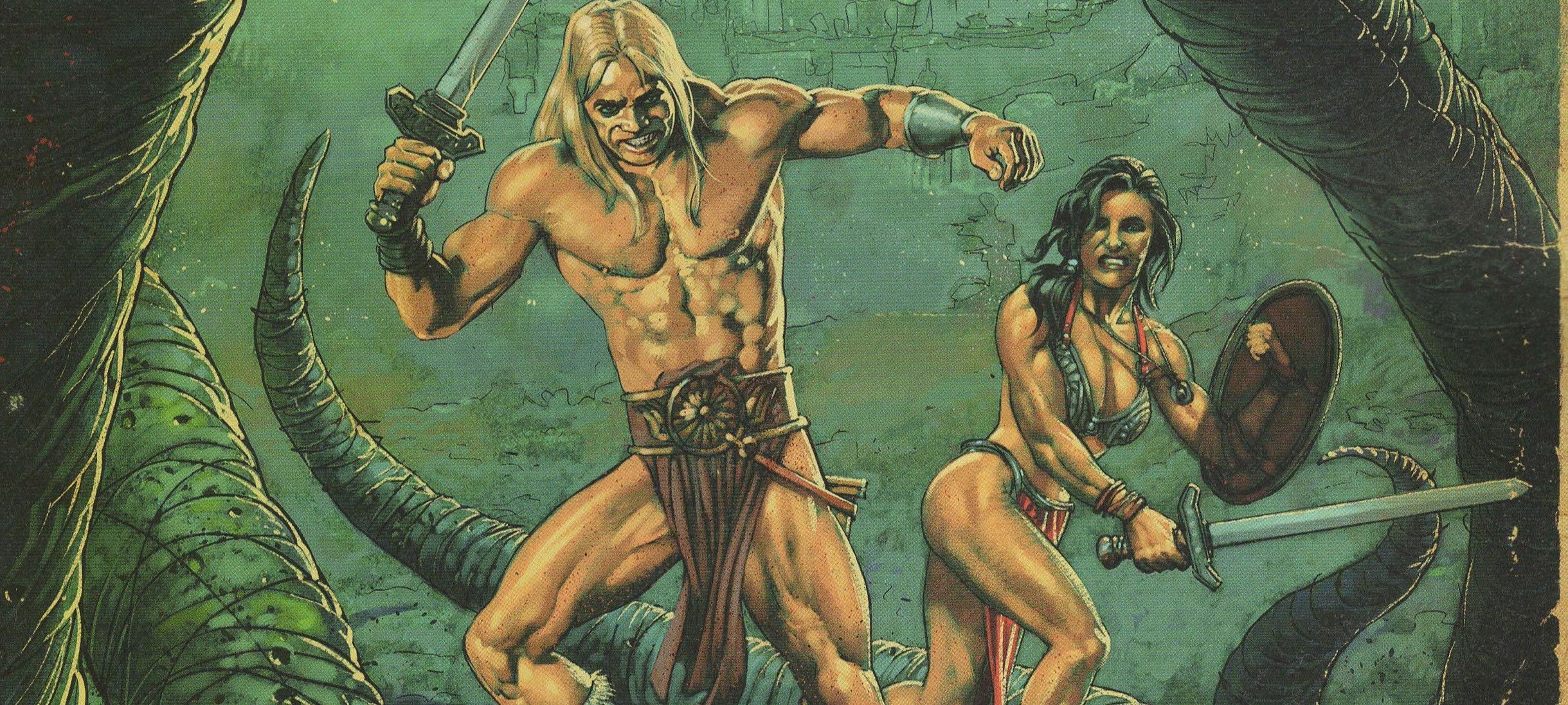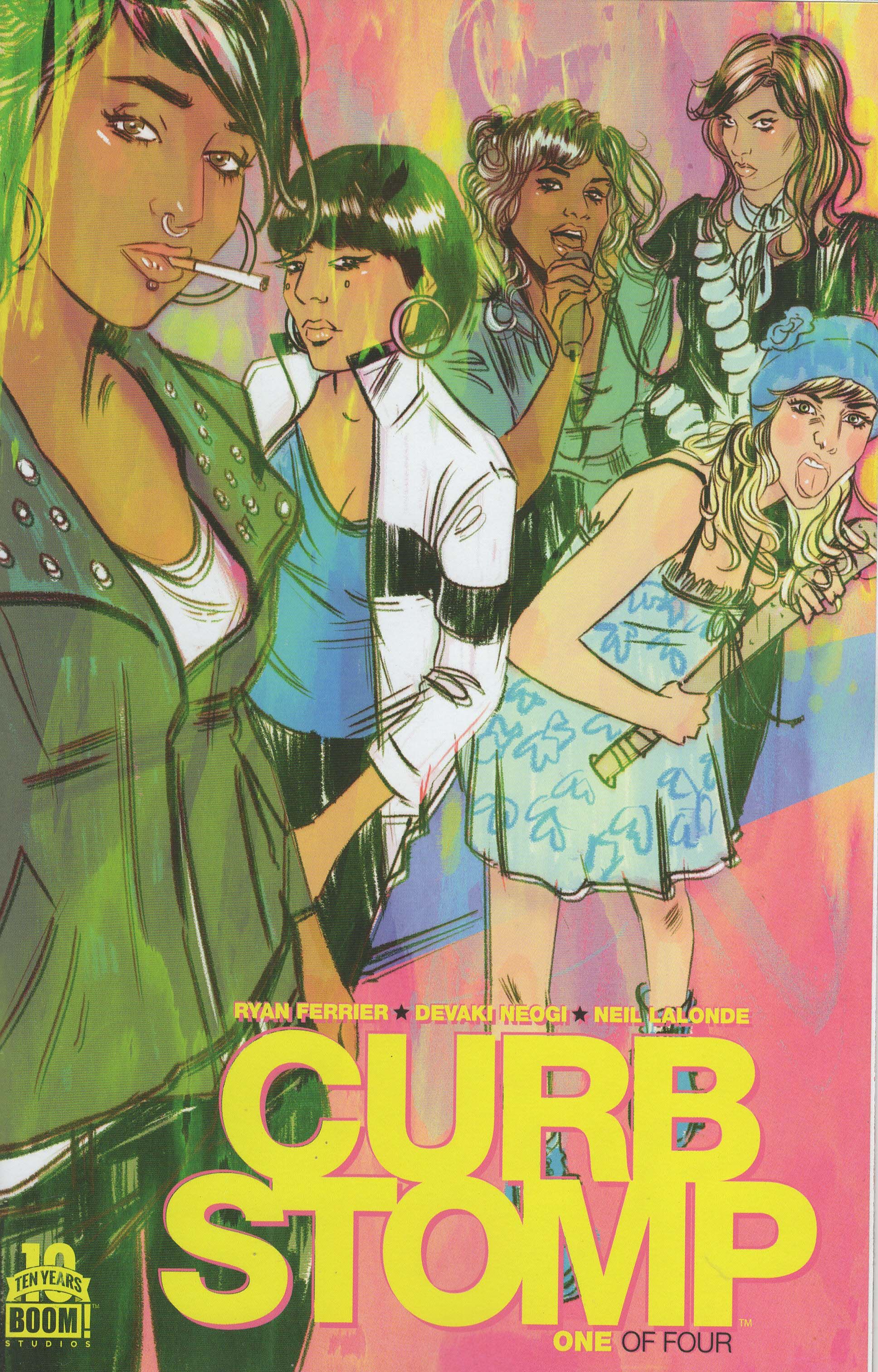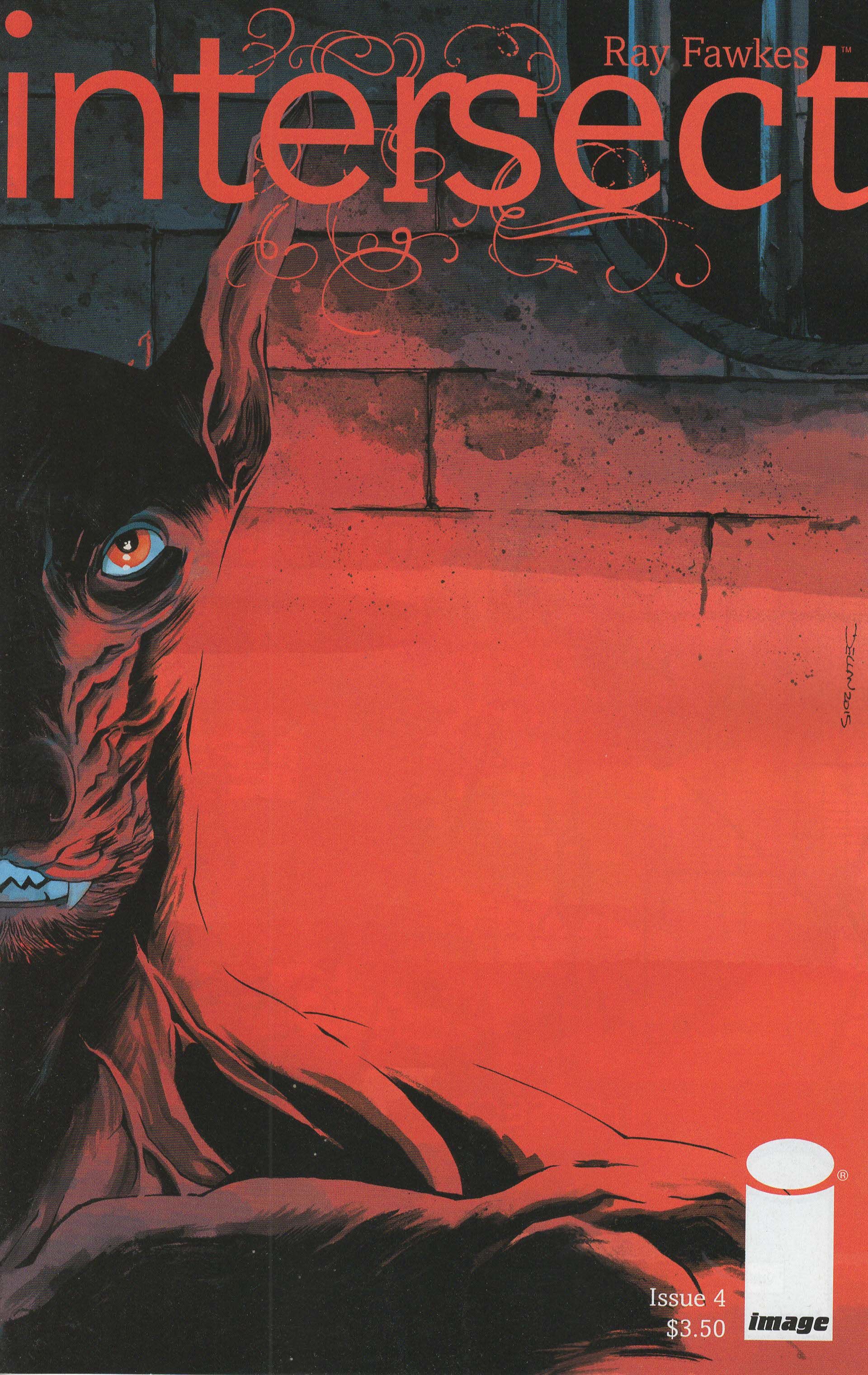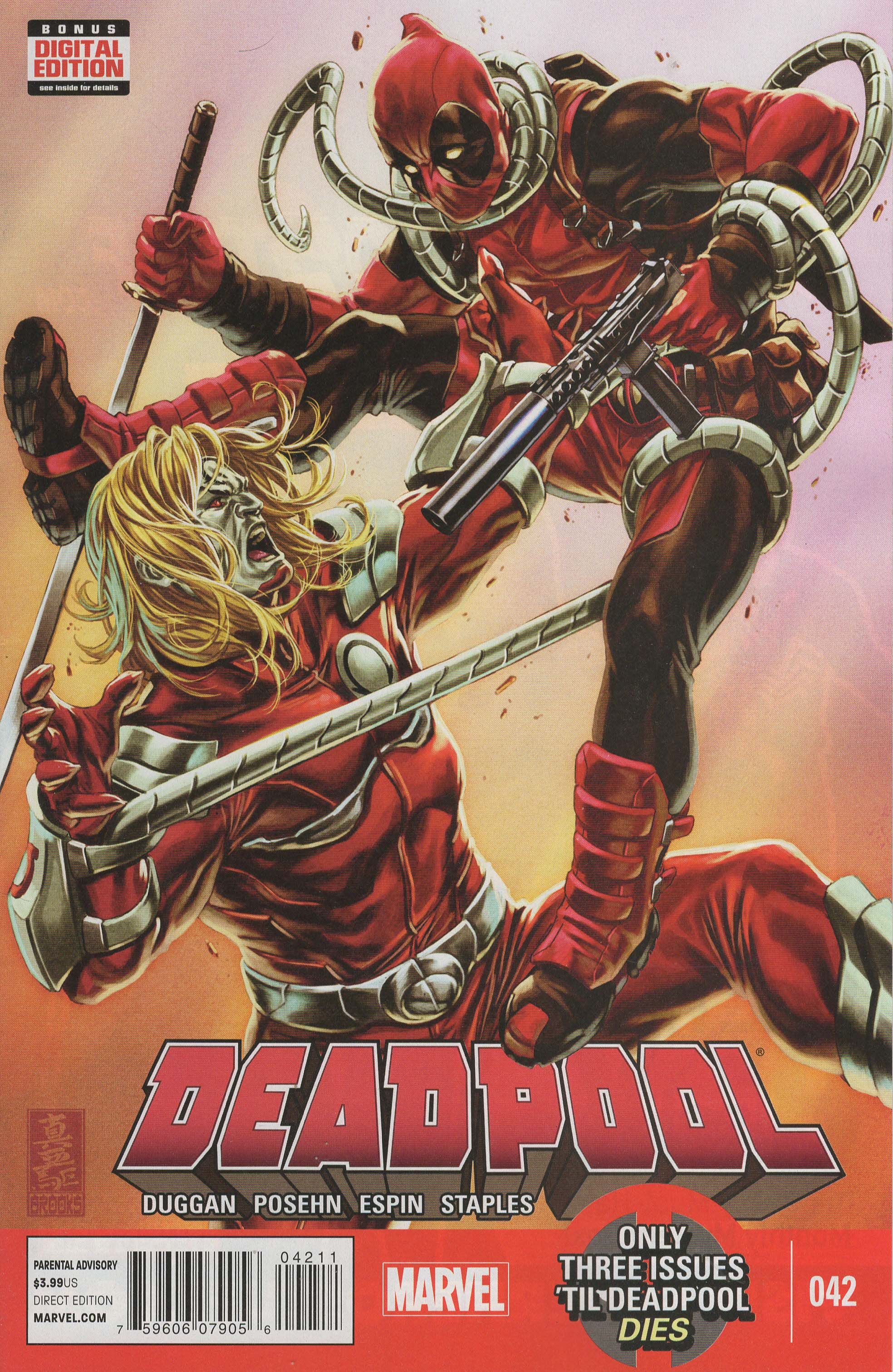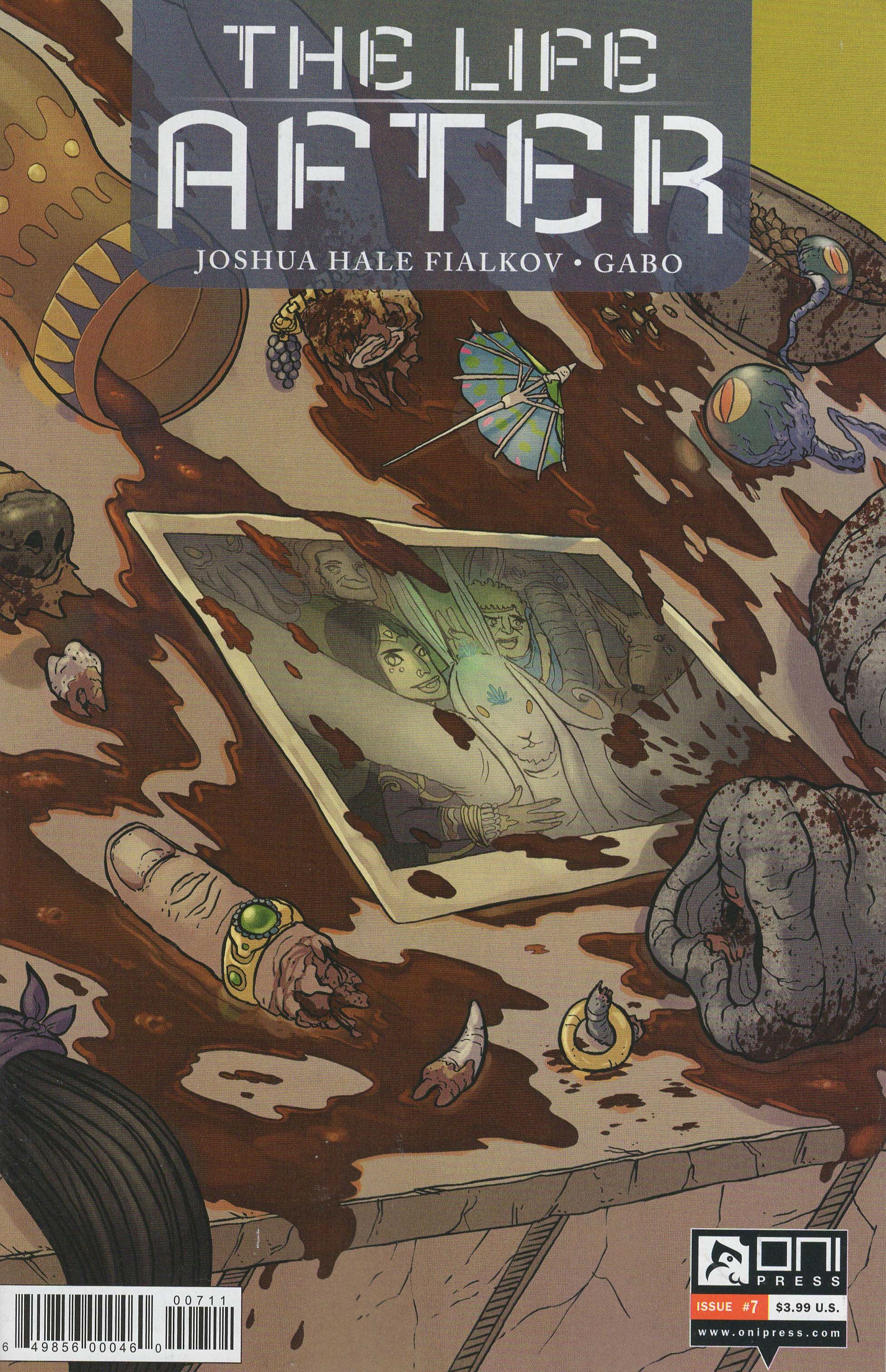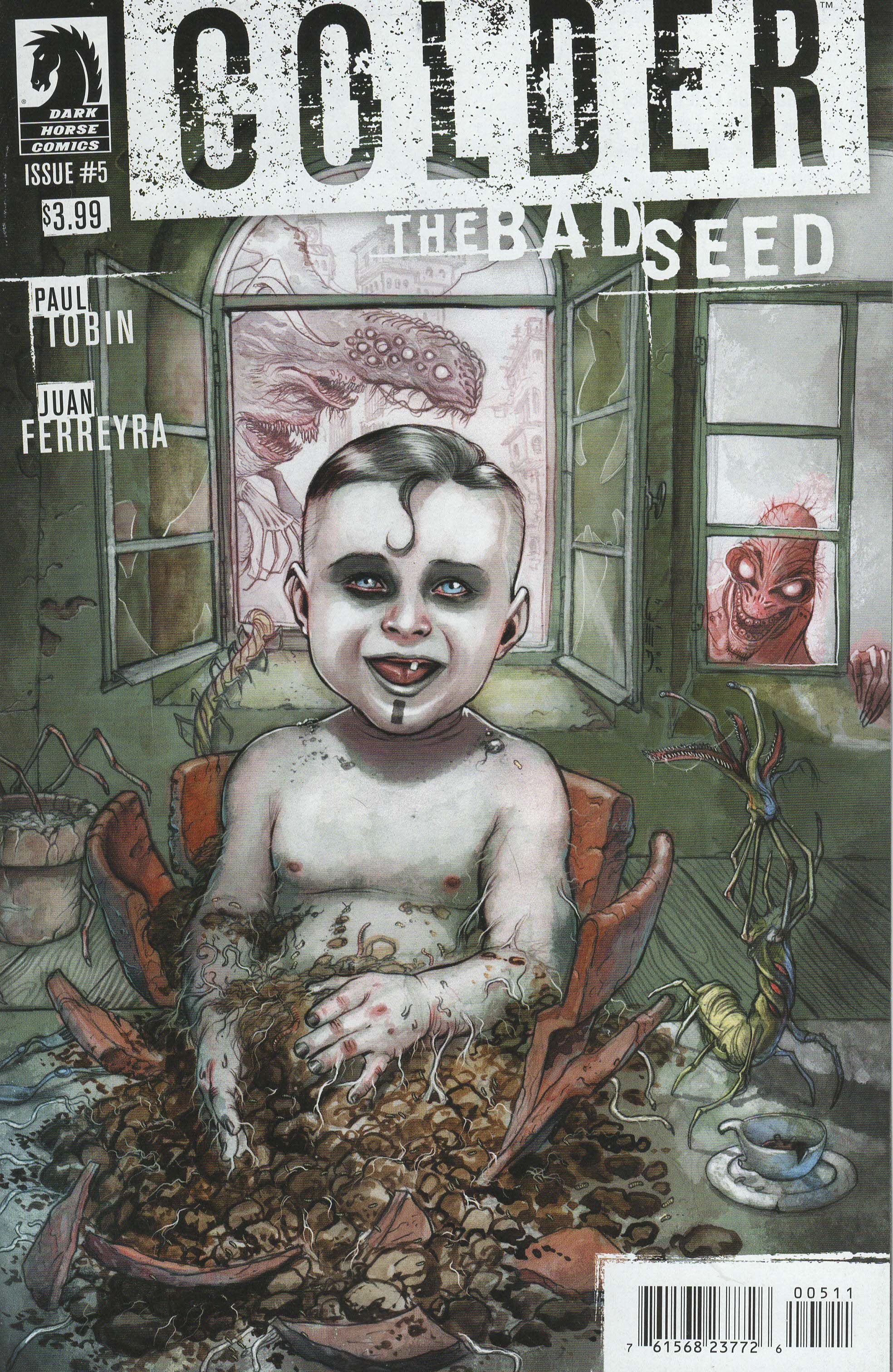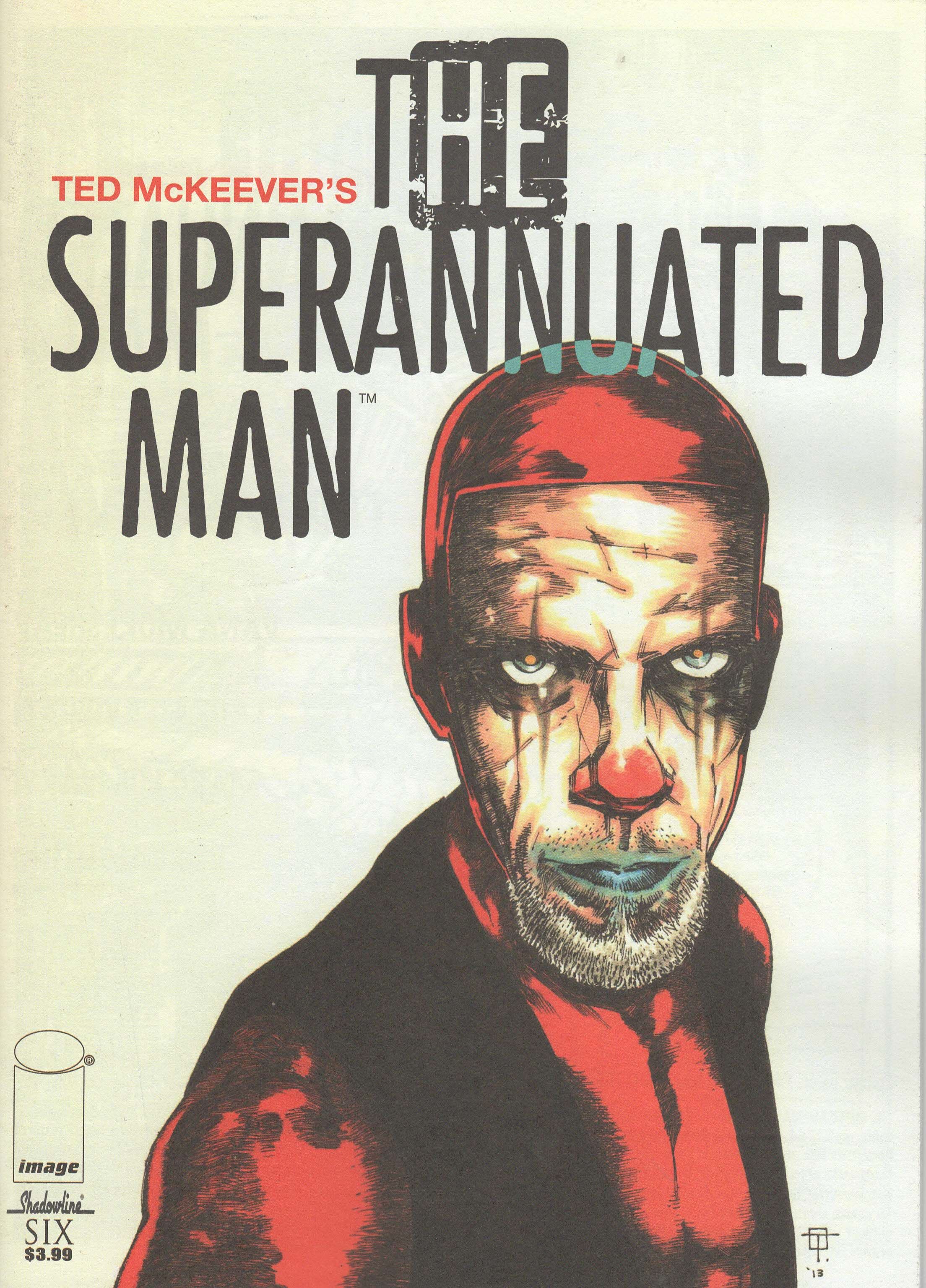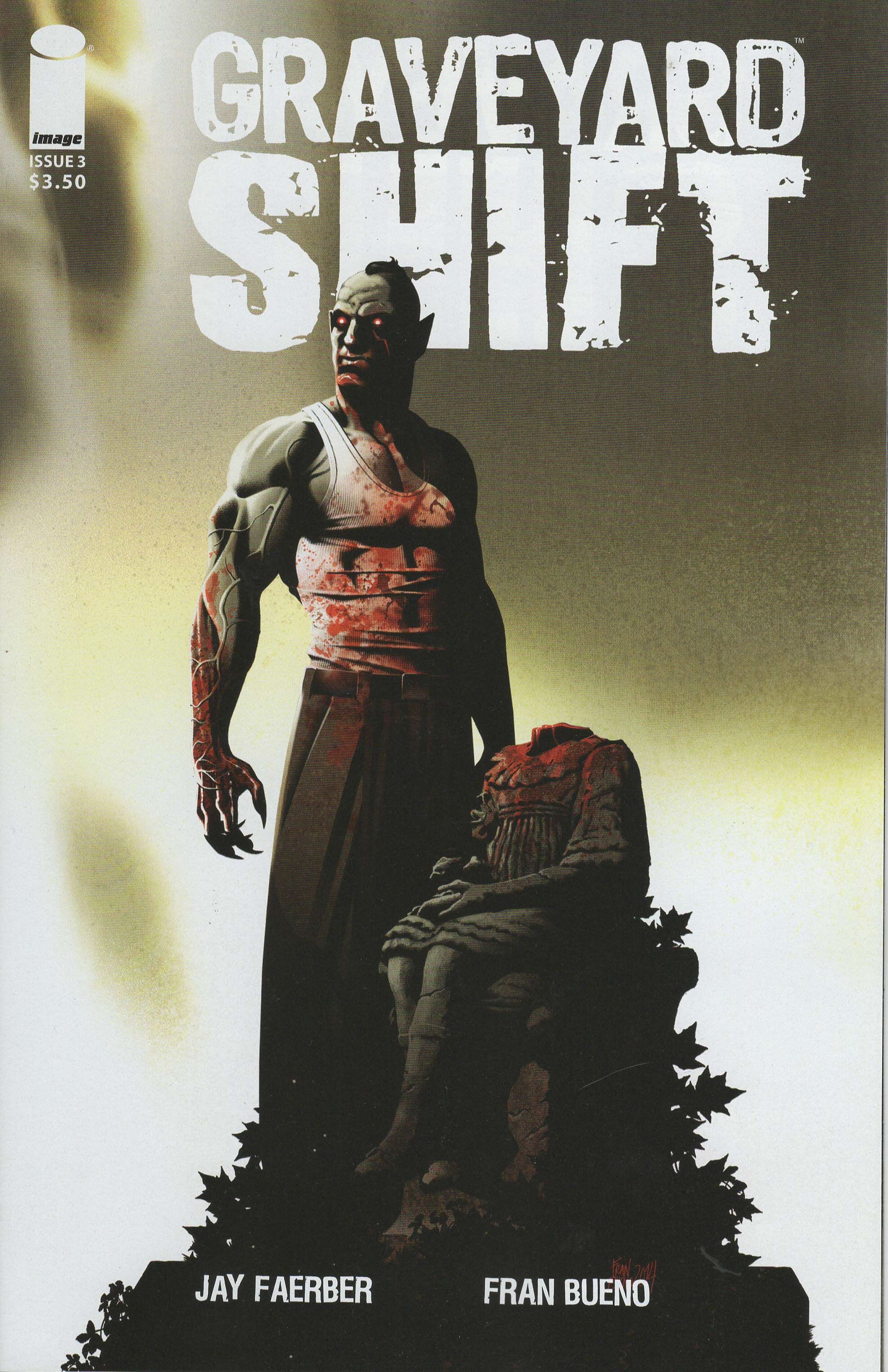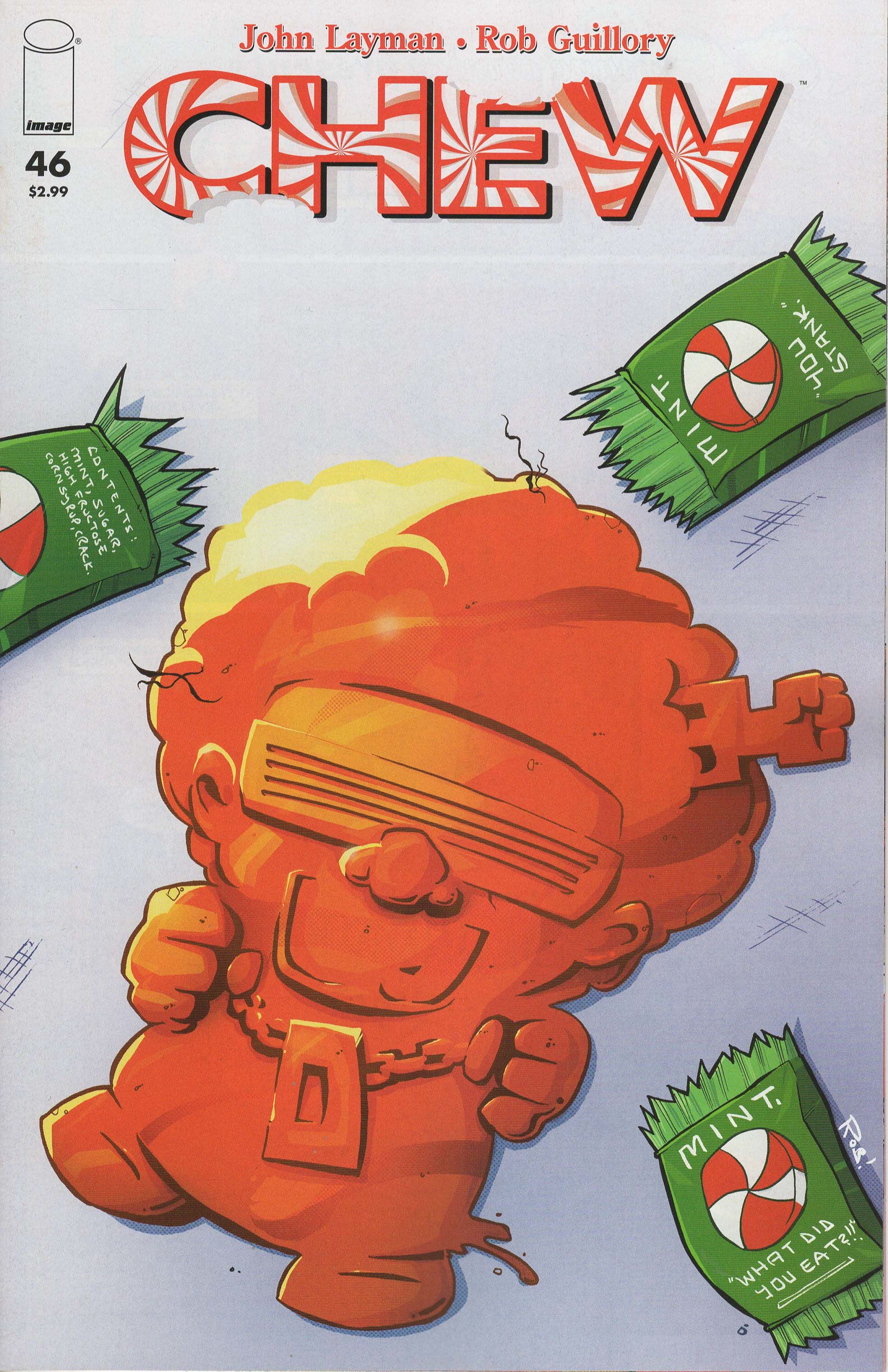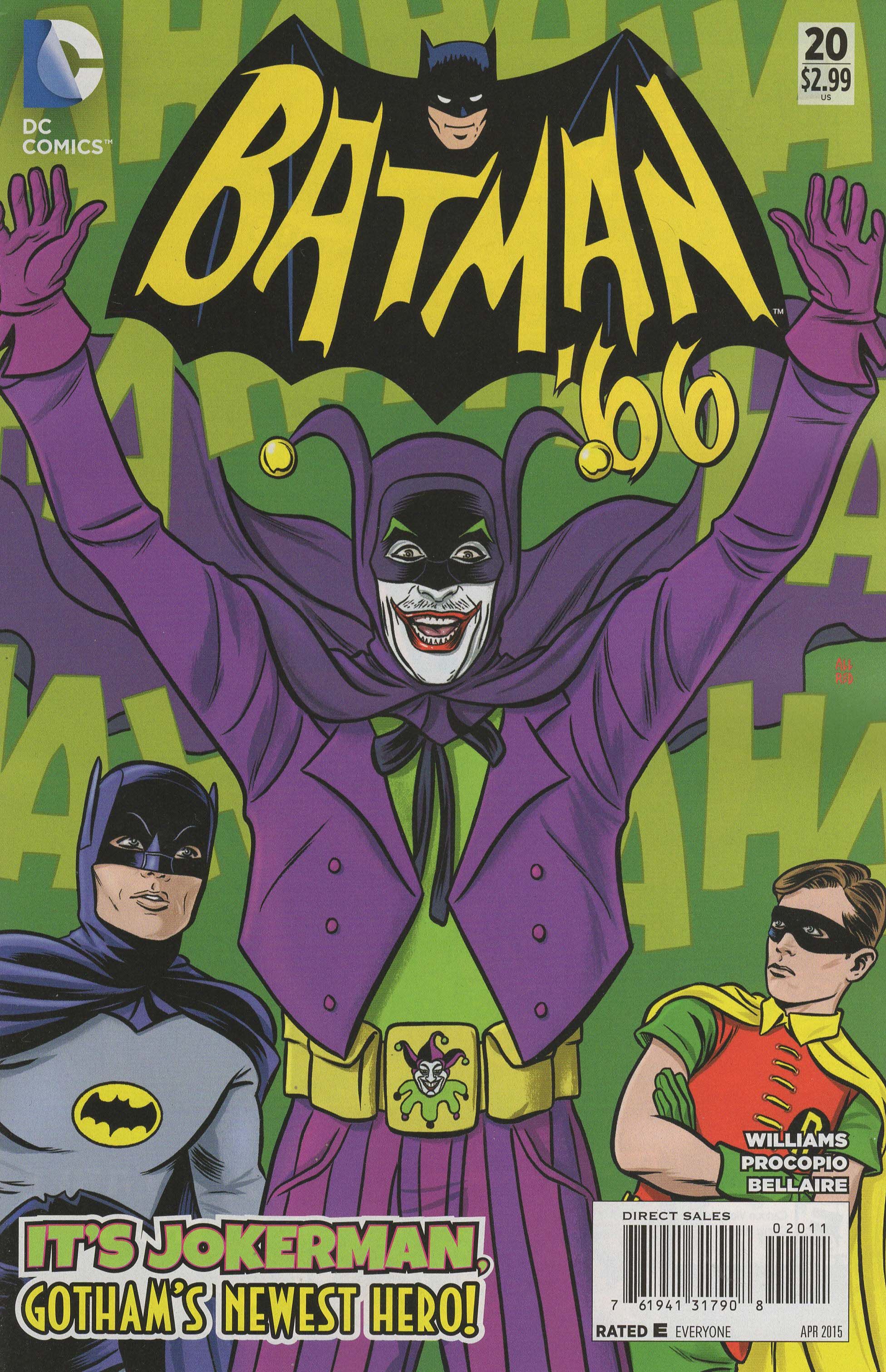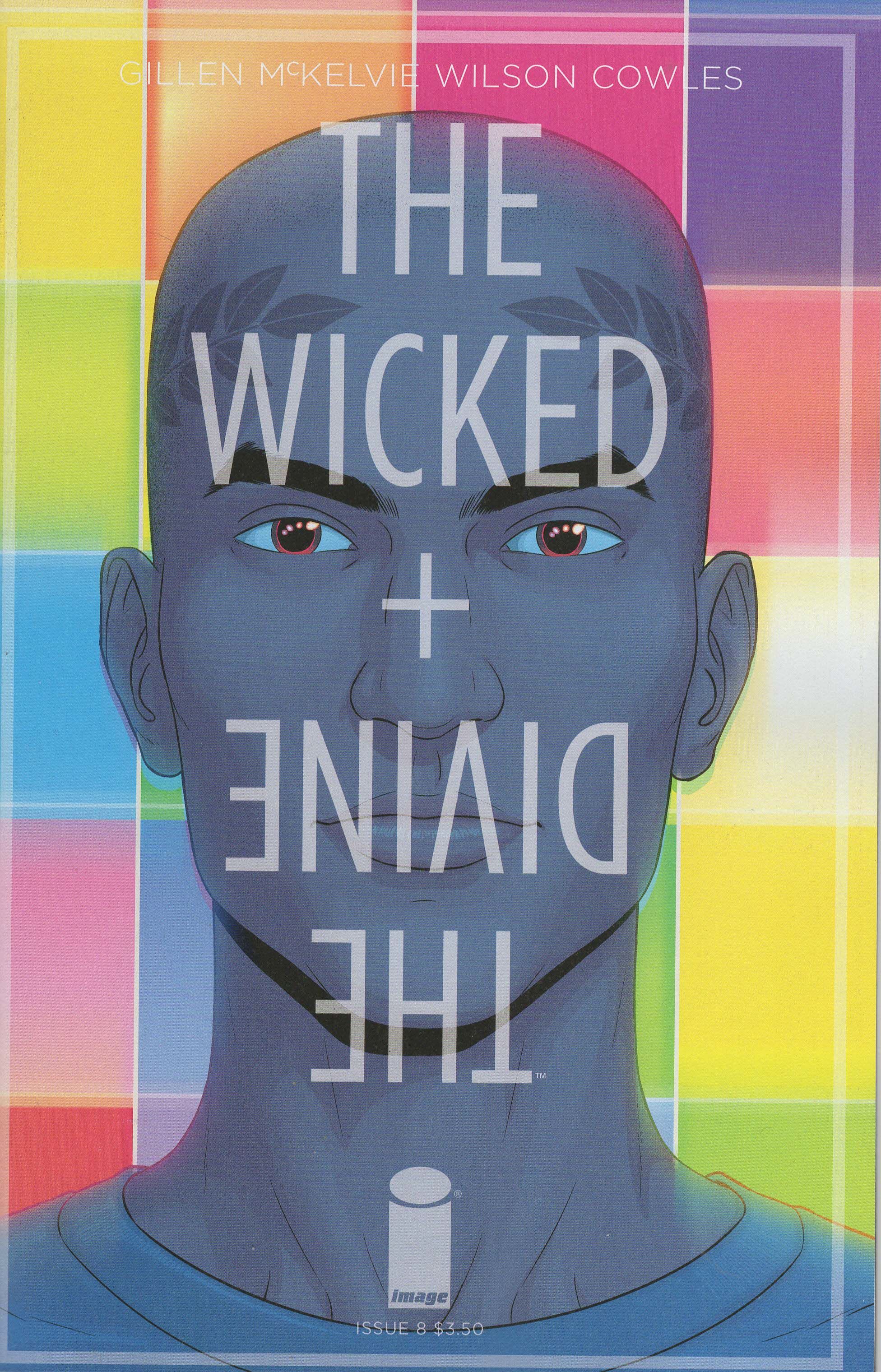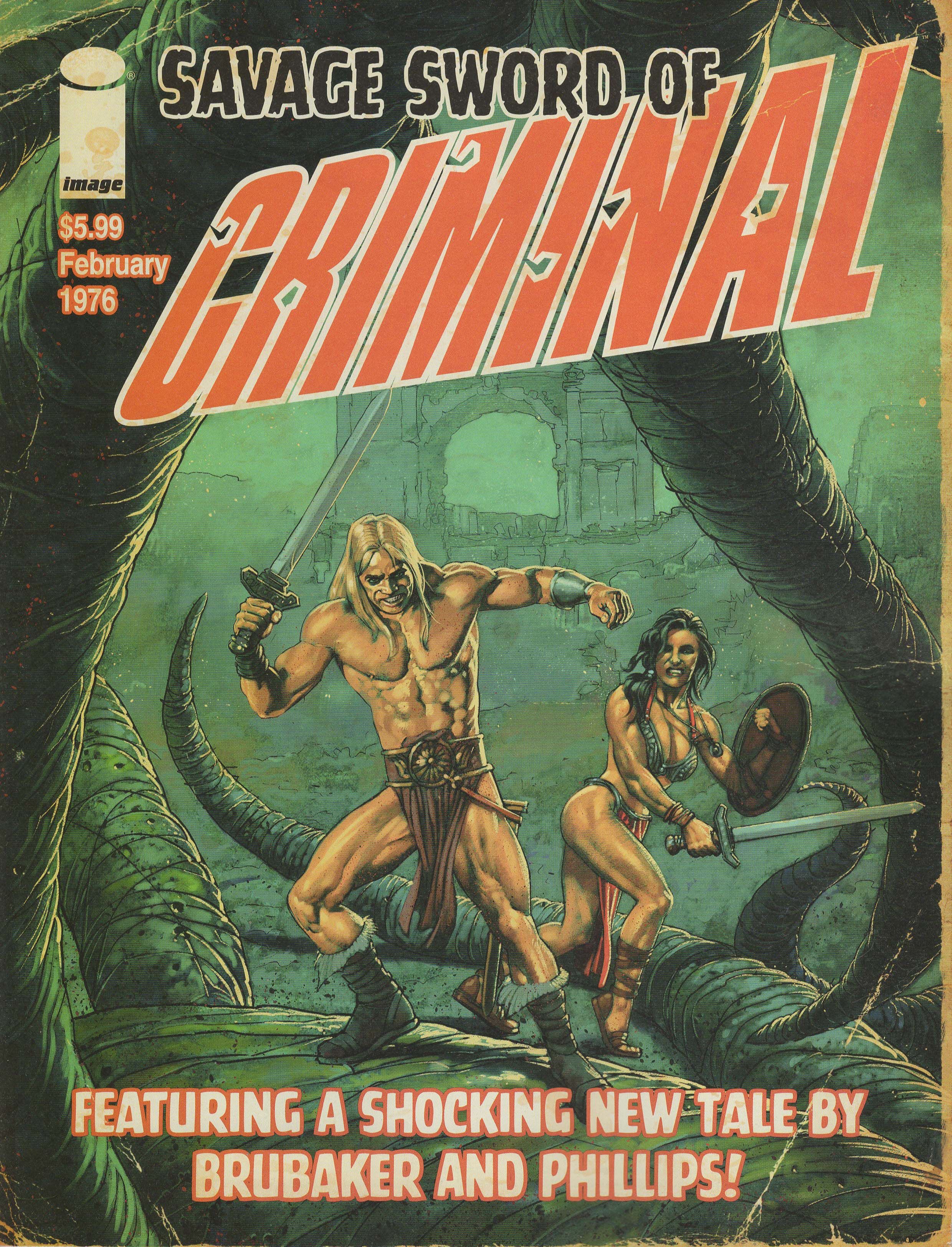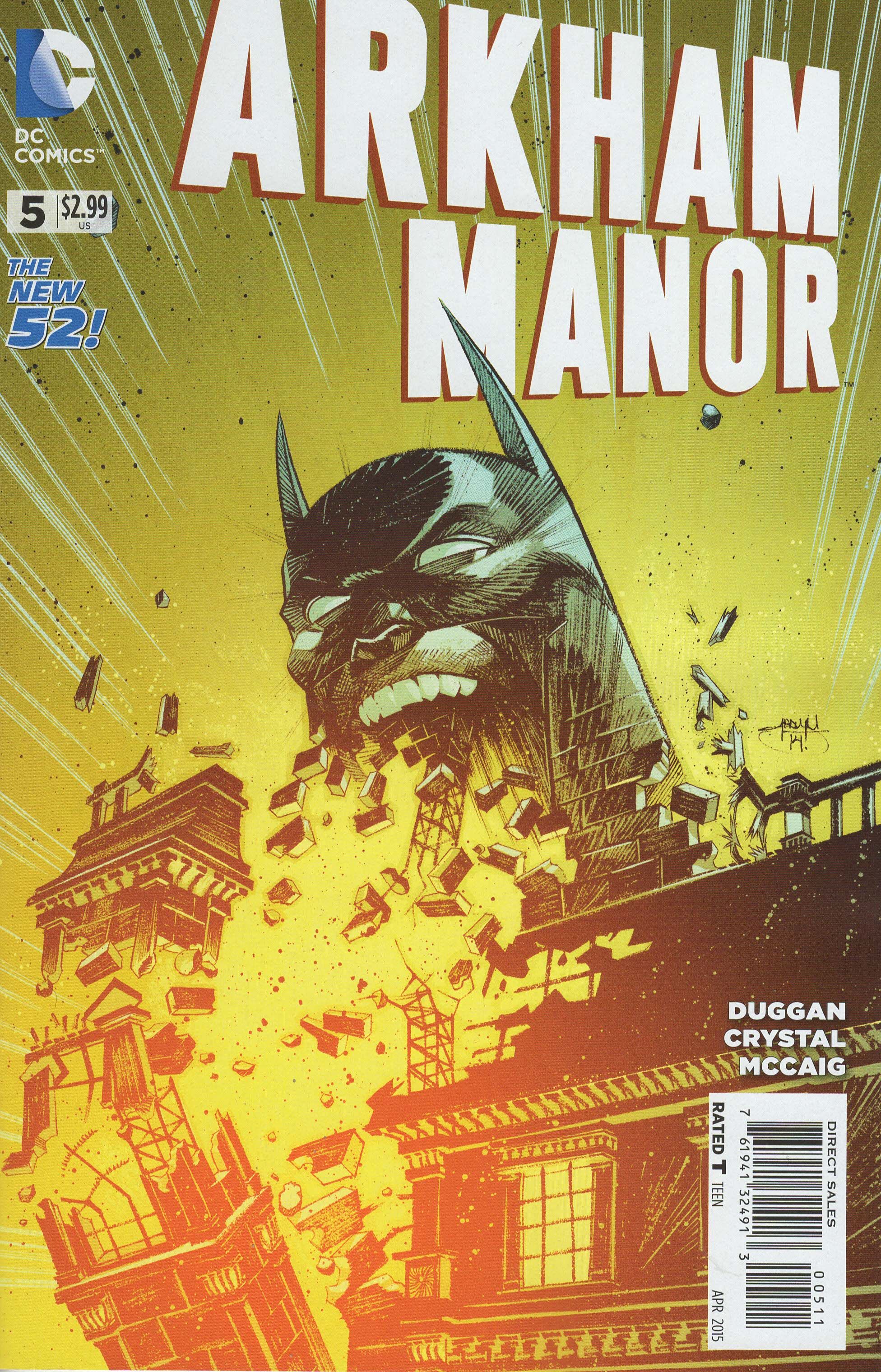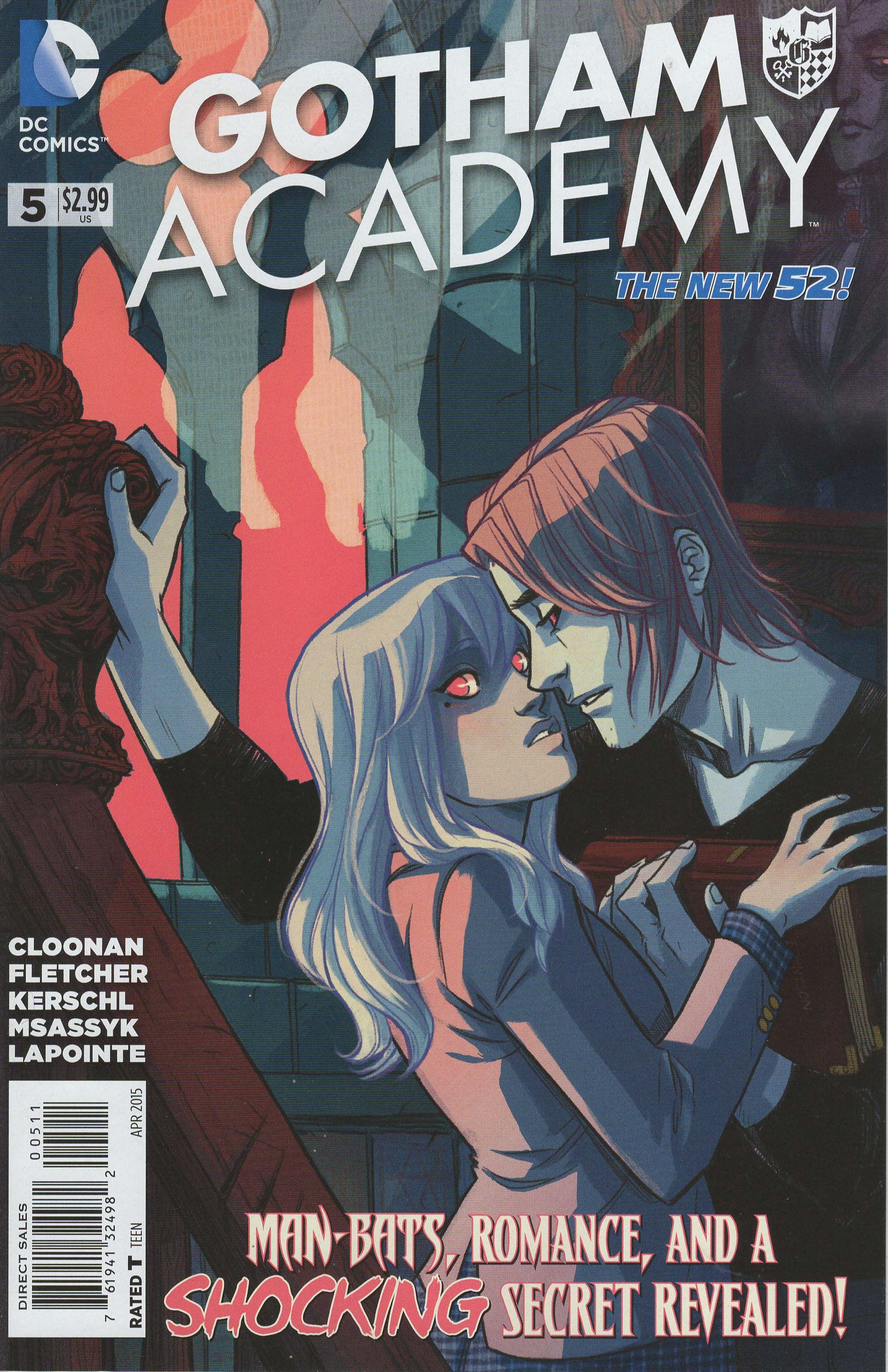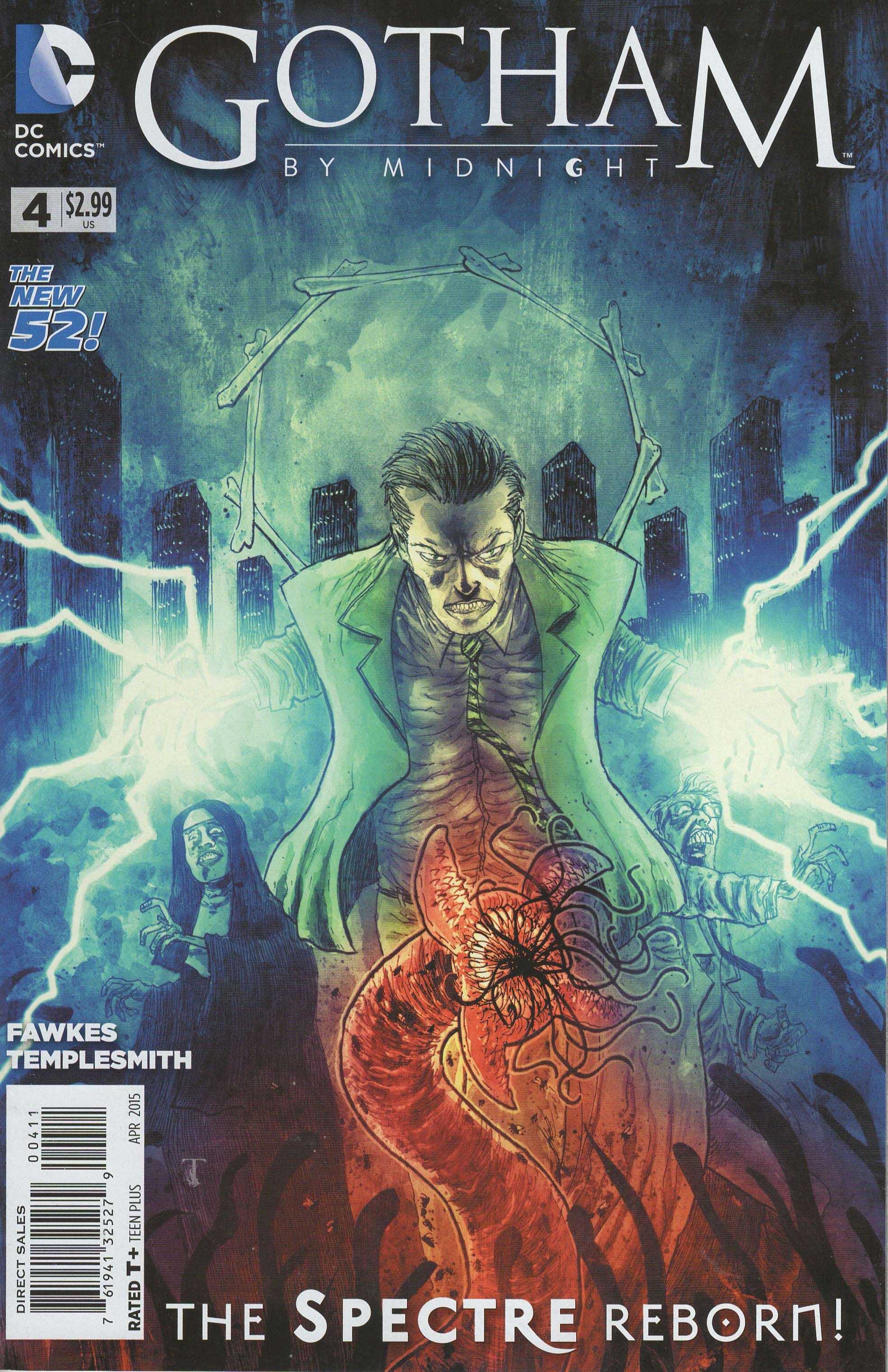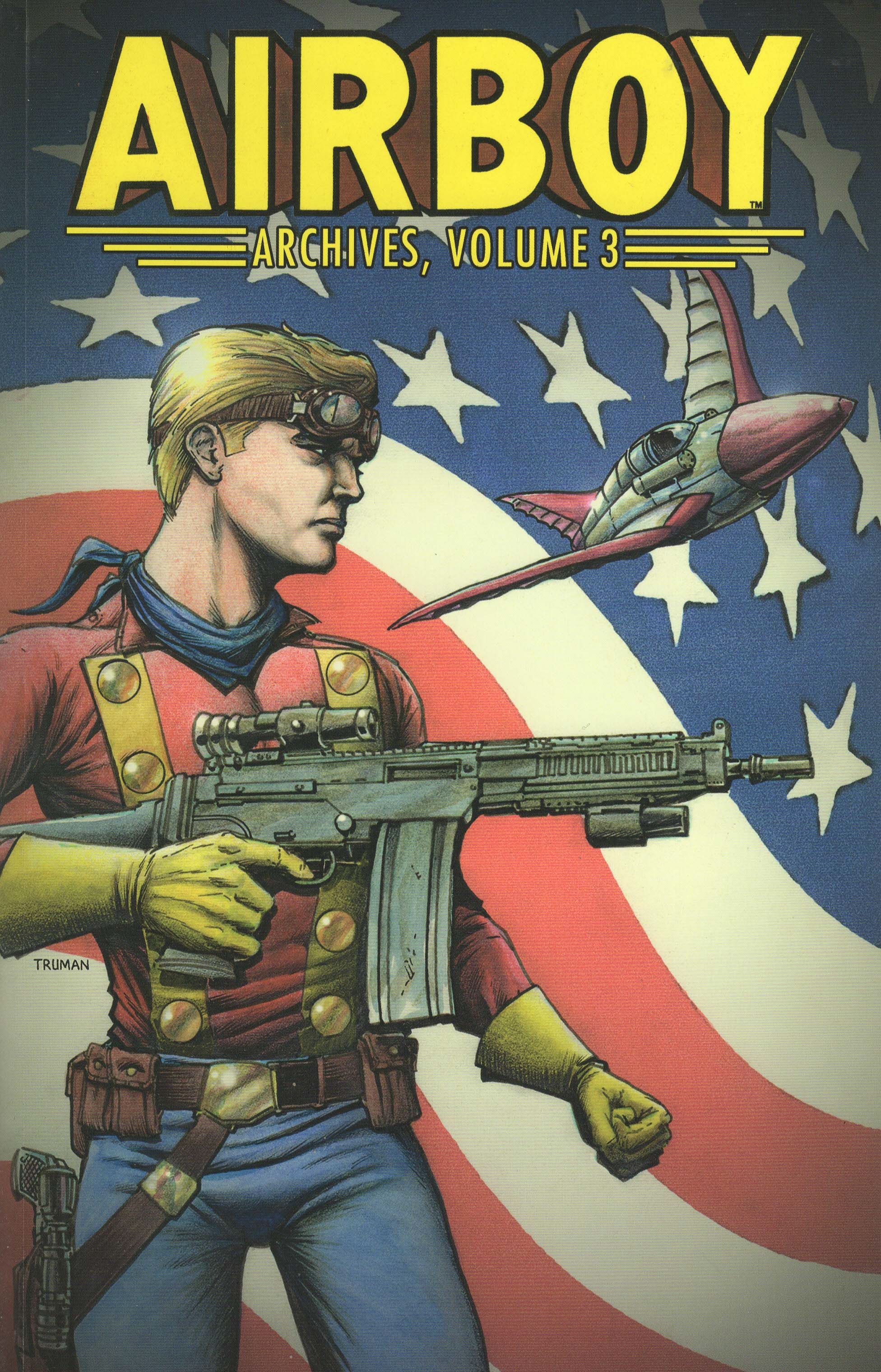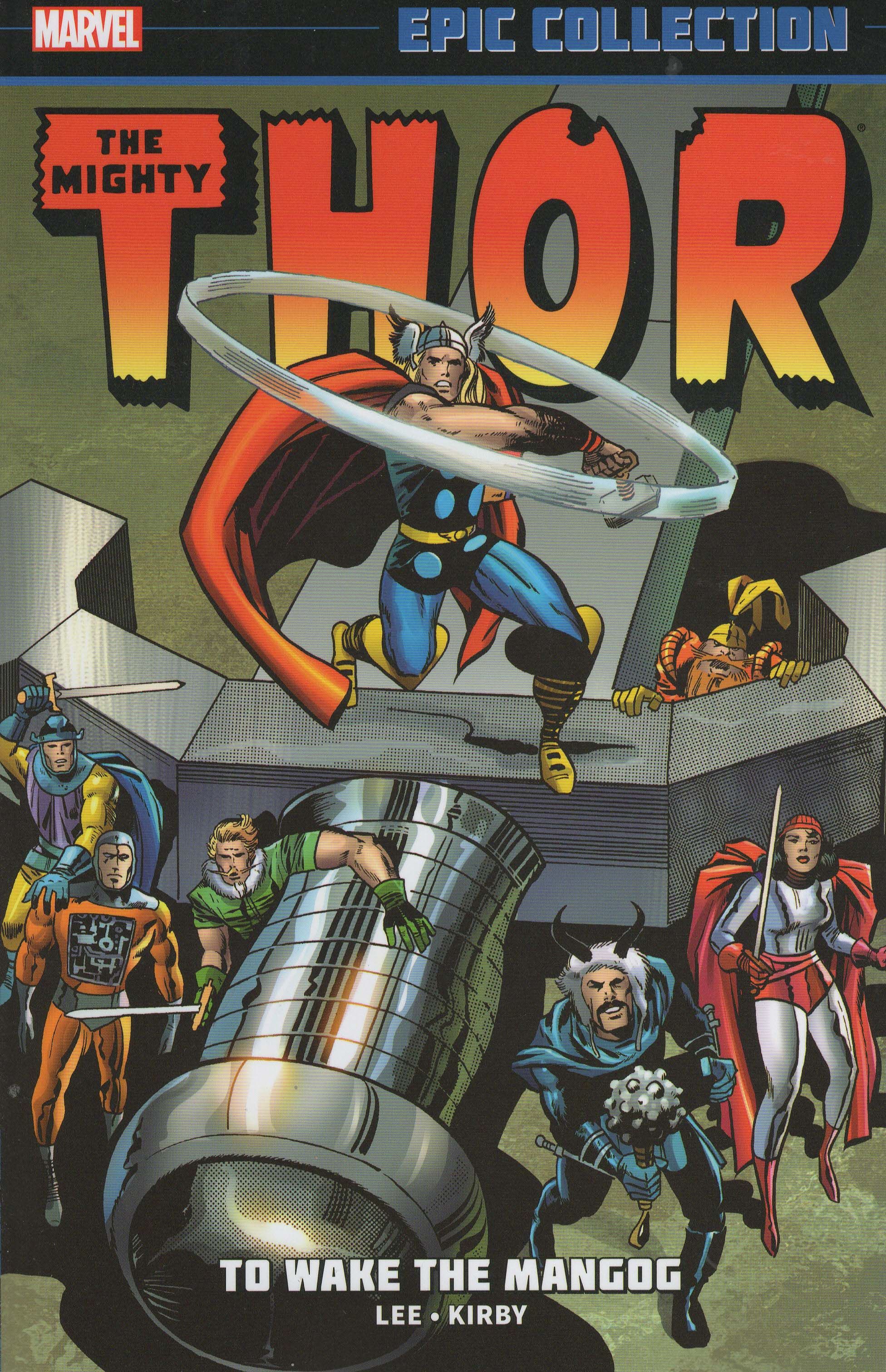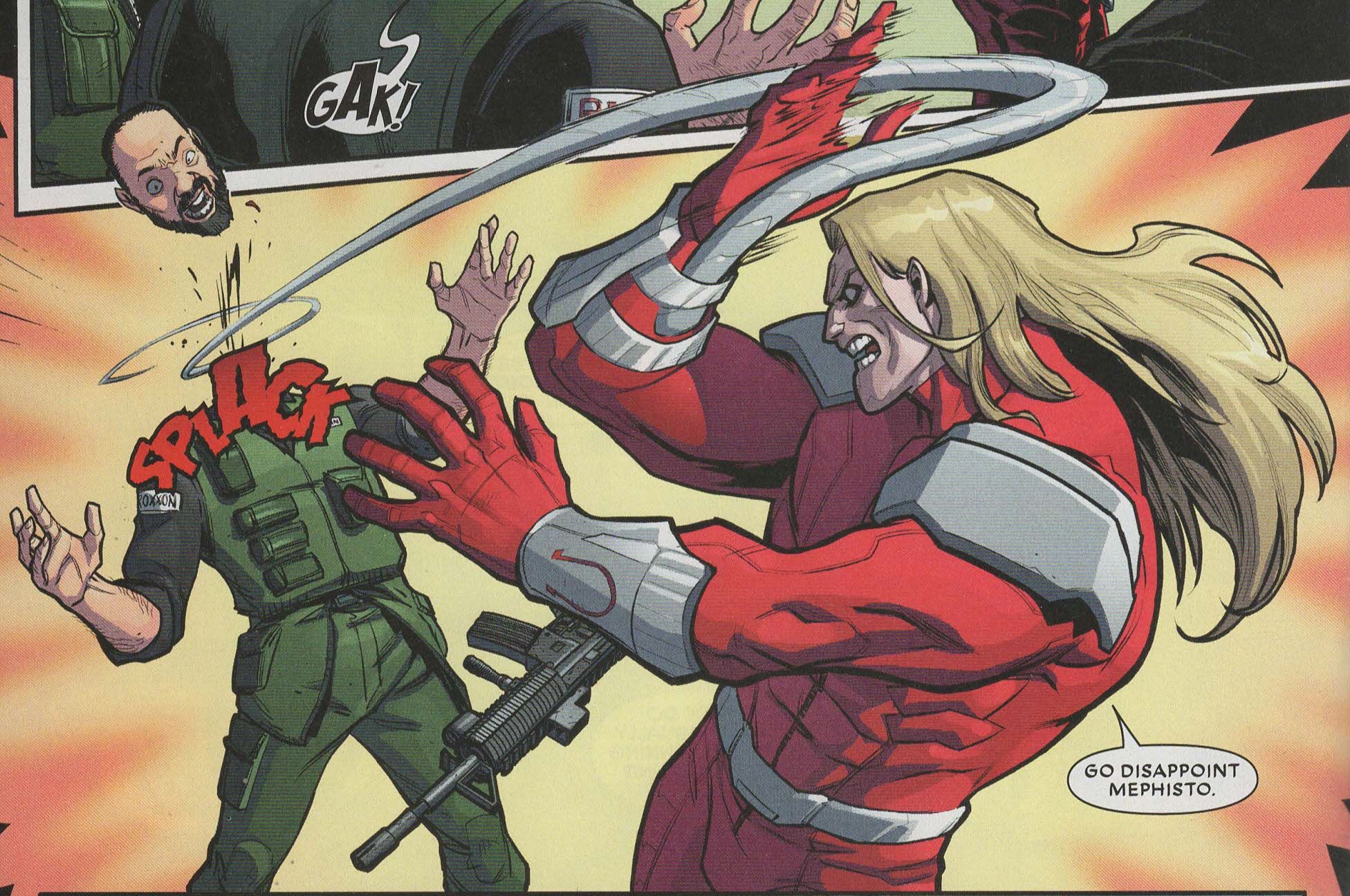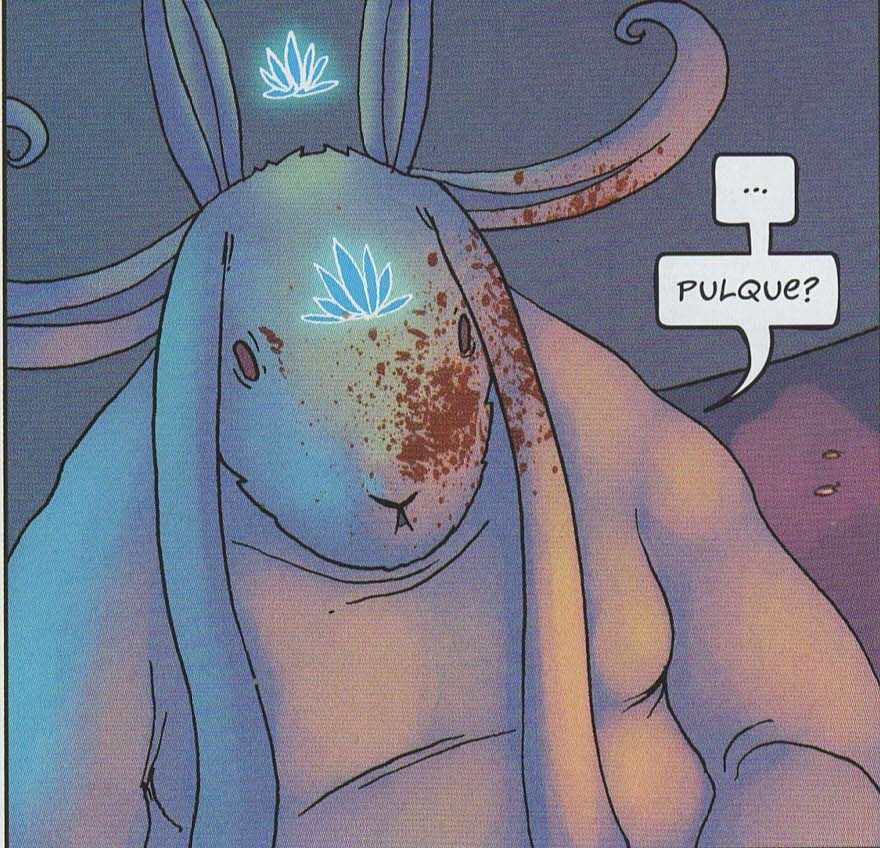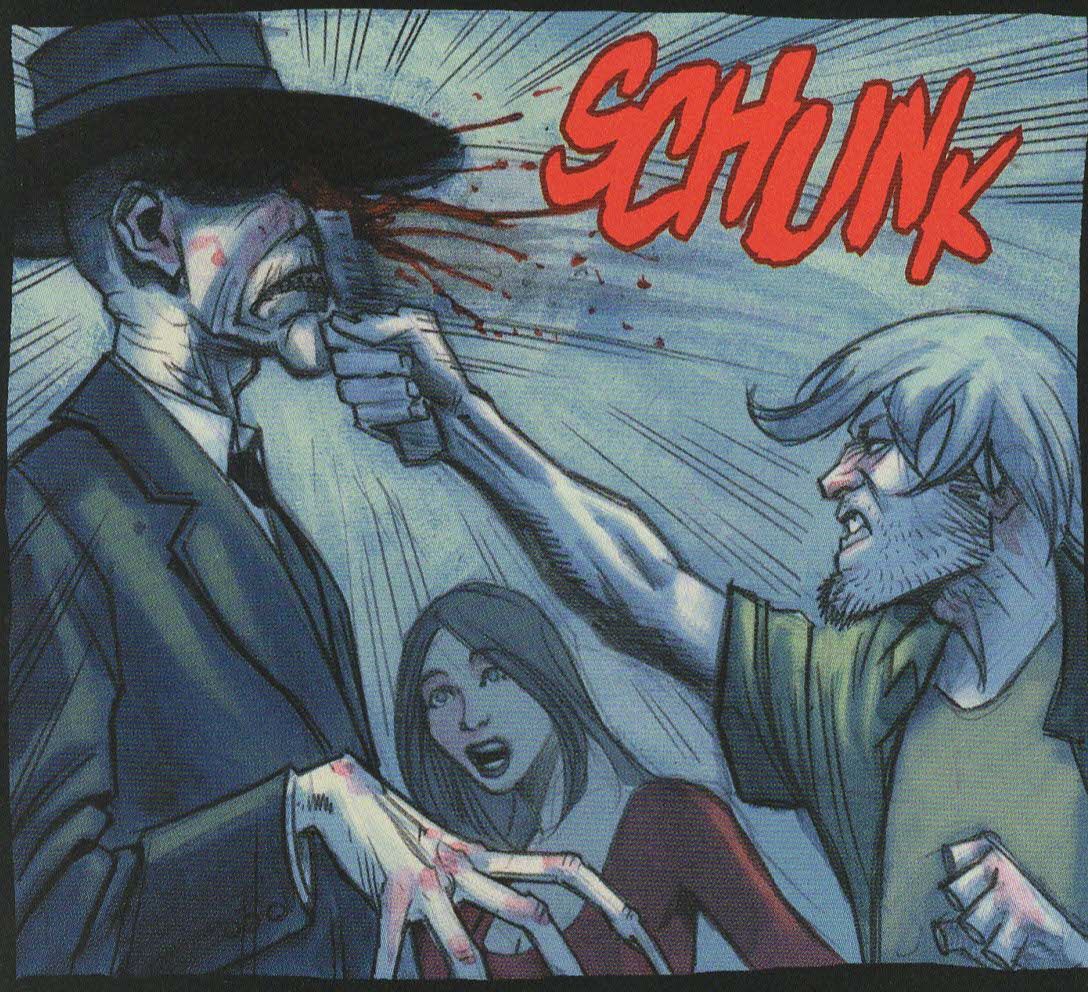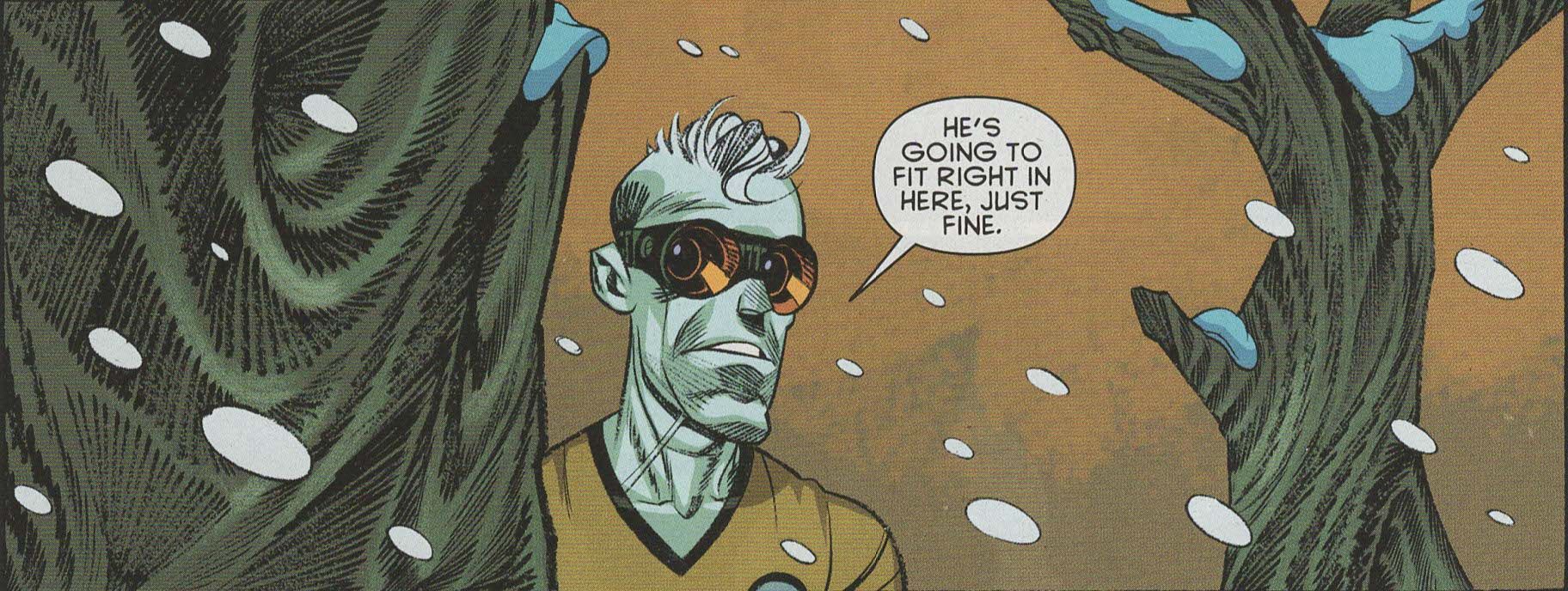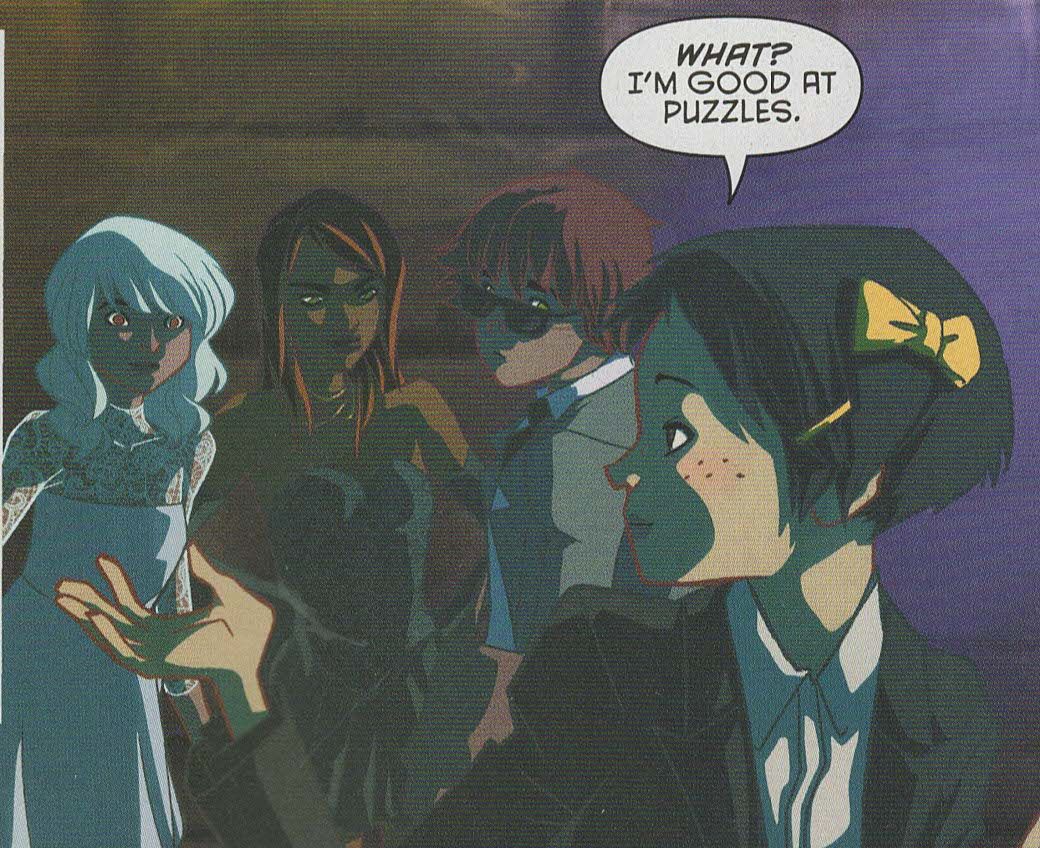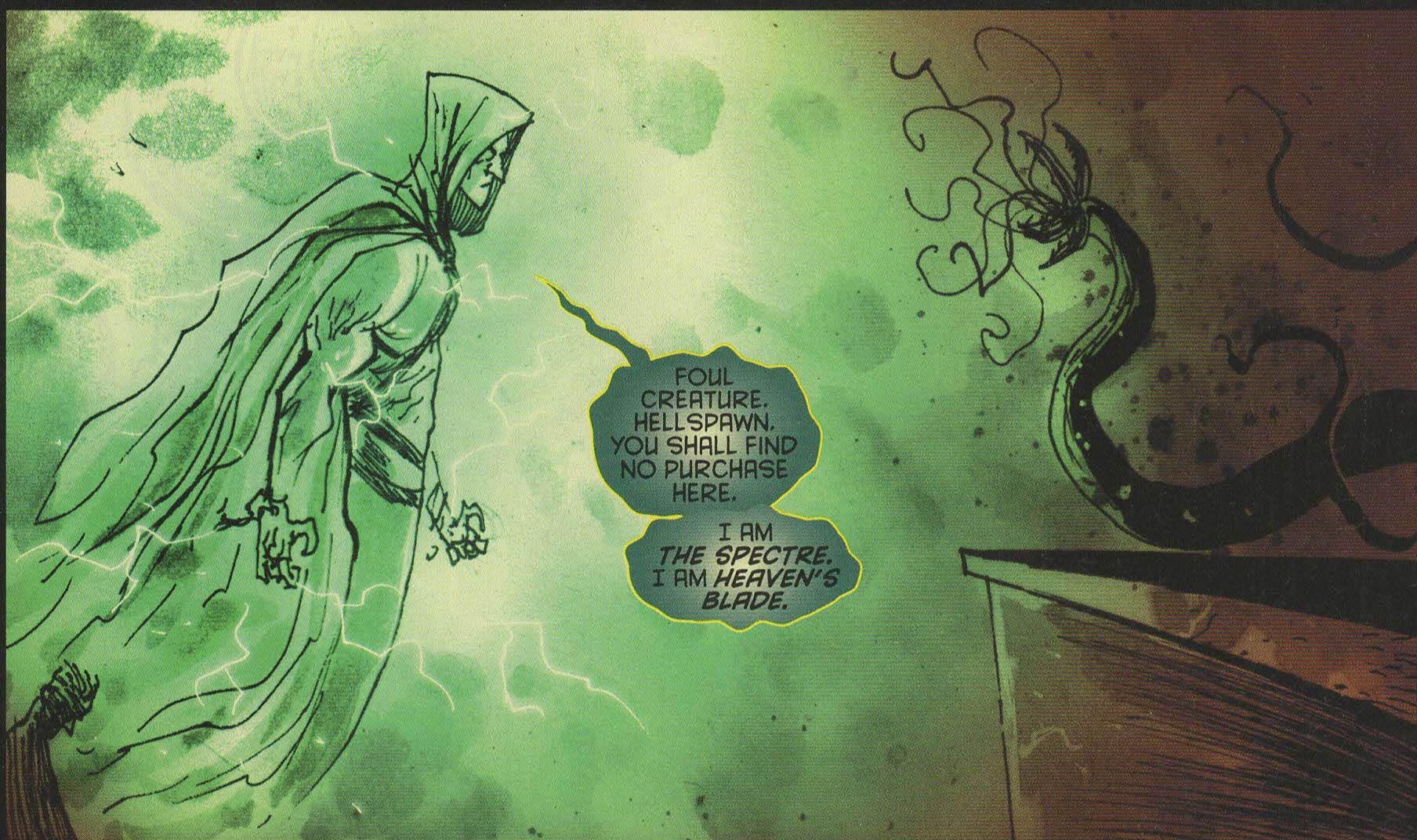Another time Billy heard Rosewater say to a psychiatrist, "I think you guys are going to have to come up with a lot of wonderful new lies, or people just aren't going to want to go on living." (Kurt Vonnegut, from Slaughterhouse-5)
Curb Stomp #1 (of 4) by Colin Bell (letterer), Ryan Ferrier (writer), Neil Lalonde (colorist), Devaki Neogi (artist), Jasmine Amiri (associate editor), and Eric Harburn (editor). $3.99, 22 pgs, FC, Boom! Studios.
As I've mentioned before, I've never seen The Warriors. It came out when I was seven years old, so I didn't see it in the theaters, and I didn't have cable in the 1980s, so I never saw it on HBO or something. By the time I was old enough to care, I didn't. I only mention this because everyone is comparing the first issue of Curb Stomp to The Warriors, but I won't do that because I've never seen it. So screw you, people who want me to compare this to The Warriors!
Anyway, Ferrier tells a story about a gang called the Fever, five girls who run Old Beach, one of the suburbs of "the City." This is an indeterminate place in an indeterminate time period, where the mayor cuts deals with the gang leaders of the two other suburbs, Newport and Bayside, to provide the City with guns and drugs and keep them out of the rich City and keep the suburbs shitty, I guess. It's unclear. They decide to cut the Fever out of Old Beach, probably because the Fever are icky girls, and so the leader of the Newport gang (which is called the Wrath) uses an incident where two of his crew are trespassing in Old Beach to start a war with the Fever. And then it's on like Donkey Kong!
So this is basically a set-up issue. Ferrier introduces the five members of the Fever pretty well, and then he gives us the basic conflict. The leader of the Wrath demands that the Fever turn over one of their members because they killed one of his (which is a lie, but it shouldn't be, as I'll note), and when the Fever fight back, the Wrath manages to capture one of the Fever, which means it's WAR!!!! Oh dear.
This is somewhat entertaining, but there are several problems with it, which don't ruin the comic but still might end up making it far less than it should be. The inciting event is okay, but Ferrier really stretches to make it serious. The trespassing punk decides to pull a gun on Machete Betty, even though she claims one of the rules between the gangs is that no one uses guns (which makes no sense, but okay). Then he begins to call her a bitch, which makes her snap (this is after his gun jams). She knows what she's doing is stupid, but instead of stopping, she goes ahead and ... curb stomps him. Now, this doesn't actually kill him, so when he makes it back to his suburb, his own gang leader kills him to pin it on the Fever. And thus the war begins. So Betty, who has a younger sister that she wants to keep safe, loses it over a stupid trespassing violation and some guy calling her a bitch (this seems like a rough world, so I can't imagine no one has ever called her that before), can't control her emotions, and ends up ... putting her younger sister in danger. Yeah, that works.
Ferrier doesn't really try to move past stereotypes, which is a common problem in comics (and, to be fair, most entertainment) these days. The girls are a tough Benetton ad who know Black Flag lyrics and don't seem to actually do any gang-related things. The men are misogynistic thugs who think they can just roll into the Fever's turf and the girls will offer no resistance. Ferrier's insistence that the Fever are the good guys means that while the Wrath and the Bayside Five - that's the other gang - are into actual criminal things, the Fever isn't a criminal gang as much as a mutual aid organization, which makes them pretty boring. I mean, this book would instantly become more interesting if the girls were, you know, criminals. They could still sing their Black Flag songs and care for their sisters and infirm mothers. The fact that they're so obviously the good guys while the other two gangs are ridiculously stereotypical bad guys makes this a far less compelling comic.
Neogi's art and Lalonde's colors are fairly interesting, as they bring this odd world to life pretty well. Neogi has that stiffness that a lot of younger artists have, so her action scenes aren't quite as good as some of the other scenes. She designs the characters well and has a good sense of place, as Old Beach is a nice, decrepit suburb where you can imagine gangs roaming the streets causing problems. Lalonde does a very nice work with the colors, as he uses nice redder tones for some of the more violent scenes, while the scene with the mayor plotting with the two other gang leaders is colored a nauseating green, which I assume has to be the point. The coloring, actually, makes the book more interesting, which is why it's a shame the script doesn't quite keep up with it.
It's only a four-issue mini-series, and it's not a bad comic, so I'll have to see what happens with it. Ferrier obviously thought he had a cool idea (and it is, to a certain degree) and decided to run with that, but I do wish he had tried to make the characters more "real" and not just cardboard cut-outs. We'll see if that gets better as we go along.
Rating: ★ ★ ★ ★ ★ ½ ☆ ☆ ☆ ☆
One totally Airwolf panel:
Intersect #4 by Ray Fawkes (writer/artist). $3.50, 20 pgs, FC, Image.
We're four issues into Intersect, and pretty much the only reason I know what's going on is because of the recaps at the beginning of each issue. Fawkes is an esoteric writer when he's working on creator-owned comics, but this is pretty impenetrable, unless I'm just not that bright.* Something has happened in the world that has made Detroit become a nightmare world where people change shape for seemingly no reason. Jason and Alison share a body, for instance, and they switch off who's "in charge." "The Kid" is growing out of the back of a comatose man. They're wandering around the city looking for answers, but so far, they haven't found any. The landscape just keeps shifting on them and making them insane. In this issue, we get a flashback to Jason and Alison before all the weird stuff happened, when they were engaged but, it seems, not terribly happy. Alison, I guess, found out that Jason digs bondage, and she doesn't know how to handle that. It's all very vague.
Fawkes's painted art is beautiful, but also fairly vague. Very often, we don't even see the characters clearly, so it's confusing about who's in each scene, and even when the characters use names, the paintings are often so vague it's hard to figure out where everyone is. Maybe that's the point (as the comic is about metamorphosis), but it's still annoying. The characters don't always look the same, either, which again might be the point but makes the artwork more opaque than it should be. Often, we get scenes that seem like memories, but they might just be places around the city where random characters show up. Like the story, the art is frustrating, because individual scenes might be beautiful, but it's very hard to get into the flow of the comic.
I don't know - I appreciate Fawkes doing something weird, but I wonder when "weird" becomes "too weird." He might have passed that point. As with a lot of comics, I'm going to finish the first arc, and then I'll assess. Who knows if I'll keep getting this.
* I must always mention this as a disclaimer. It's not only self-deprecating; I know I'm smart about plenty of things, but I tend to get lost when dealing with more esoteric stuff. So maybe I'm just missing way too much in this comic.
Rating: ★ ★ ★ ★ ★ ★ ☆ ☆ ☆ ☆
One totally Airwolf panel:
Deadpool #42 ("Sand and Deliver") by Gerry Duggan (writer), Salva Espin (artist), Brian Posehn (writer), Joe Sabino (letterer), Val Staples (colorist), Charles Beachem (assistant editor), and Jordan D. White (editor). $3.99, 20 pgs, FC, Marvel. Deadpool created by Fabian Nicieza and Rob Liefeld. Omega Red created by Jim Lee and John Byrne.
After "The Good, the Bad, and the Ugly" arc of Deadpool (actually, during it, too), the book hit a bit of a lull, where it was still entertaining but not as good as it had been for the first few arcs. Part of that lately was because the book tied into the most recent big event in the Marvel U, "Axis," which meant we got a dull, "good" Deadpool trying to be good, but even before that, the book seemed to have drifted a bit. It's still not as good as it was early on, but this current (final, I guess, as the book is ending in a few issues) arc has been a fairly decent return to form, as Deadpool is helping Arabs in "Waziribad" fight against Roxxon, which is always a good villainous corporation, just because he can. In this issue, he gets to fight Omega Red, who was ridiculous as a villain even when I was 20 and thought anything associated with the X-Men was the coolest thing ever. I mean, "death coils"? I still don't get those things. Anyway, Duggan and Posehn are back to doing what they do best, which is having Wade crack jokes while fighting it out with goofy bad guys. Oh, and Paste-Pot Pete saves the day. Because of course he does!
Rating: ★ ★ ★ ★ ★ ★ ★ ☆ ☆ ☆
One totally Airwolf panel:
The Life After #7 by Crank! (letterer), Joshua Hale Fialkov (writer), Gabo (artist/colorist), John Lucas Jones (editor), and Ari Yarwood (editor). $3.99, 24 pgs, FC, Oni Press.
I like Fialkov as a writer (he's a nice guy, too), and I'll try almost everything he does (especially if it's not for DC or Marvel, which comes with their own problems for writers), so I'm hanging in there with regard to The Life After, which really hasn't grabbed me. The premise isn't bad - dude dies and ends up in the afterlife, where he meets up with Ernest Hemingway and discovers he has a weird power that could upset the bureaucratic cold war between Heaven and Hell. He's also in love with a woman who doesn't love him and has some reasons to hate him, which she doesn't know about yet. So it's not a bad story, but for whatever reason, it's just not doing it for me. Fialkov does his thing, and the plot moves along, and in this issue we get a bit more about the giant rabbit in the cave and the kids who hang around with it, plus Jude and Hemingway apparently get to Heaven, which probably isn't all it's cracked up to be. I don't love Bautista's artwork - it's a bit primitive (in a perfectly decent way) and seems suited for the more kid-friendly story he was doing in the back of Elephantmen rather than a more "serious" (by a matter of degrees) work like this. His style is cartoonish, which helps deflate some of the pompous characters in the book, but it also means the appearance of Satan (I guess) in the book lacks some gravitas. It's certainly not easy to shift tones, and many artists I like don't do it particularly well, but I think that it irks me here a bit more because the story just hasn't charged me up, so I notice the lack of tone shifts from the artwork more. Maybe that's it.
I'll probably get the rest of the arc - it looks like it goes through issue #10 - and then I'll see. I always hate not liking a book that I really want to like more, but that's the way it is sometimes!
Rating: ★ ★ ★ ★ ★ ☆ ☆ ☆ ☆ ☆
One totally Airwolf panel:
Colder: The Bad Seed #5 (of 5) by Juan Ferreyra (artist), Eduardo Ferreyra (color assistant), Nate Piekos (letterer), Paul Tobin (writer), Ian Tucker (assistant editor), and Daniel Chabon (editor). $3.99, 22 pgs, FC, Dark Horse.
The second arc of Colder comes to an end, and that means we have to wait until September before we get another one. Dang it!
"The Bad Seed" wasn't quite as focused as the first arc of the story, possibly because Swivel wasn't as interesting a villain as Nimble Jack, even if his visual was pretty awesome. Tobin focuses more on Reece in this arc, too, which isn't a bad thing, but when Declan figures out in this issue how to defeat Swivel, it feels a bit more haphazard, because Declan hasn't been as big a factor in this arc as he was in the first one. No one wants Reece to become insane and fight the insanity that way, because that's what Declan's for, but if the monsters keep coming out of the insane world, Reece simply won't be able to handle them. Reece shows a lot more moxie in this arc than she did in the first (she wasn't completely ineffectual in the first arc, especially when the action remained in the "mundane" world, but she still ended up in a bad place), and that's good, but let's hope now that a certain old foe is back, she'll be better equipped to deal with him next time. Tobin does explain the connection between Declan and Swivel, which is nice, and the way Declan ultimately defeats Swivel is well done, tying the idea of losing part of yourself in insanity in order to escape said insanity. How it will affect Declan going forward is something we'll just have to see. But Swivel's mutilation-filled "gardening" is never made clear enough - Tobin does go into a bit, but maybe I need to go back and see if there was more in previous issues, because in this issue, Swivel just alludes to some things, and that's it. It's perfectly possible I'm just forgetting. However, the creepiness of Swivel is still great, and while Declan and Reece don't get to talk a lot in this issue, Tobin has done a good job showing how much they have come to trust each other, especially when Declan asks something gruesome of Reece. So while it's not as good as the first arc, it's still pretty good.
Obviously, anything with Ferreyra on art is going to have something going for it. If Ferreyra can take exploitative schlock like Kiss Me, Satan! and make it a decent read, then he's certainly going to make a story by Tobin, who's a much better writer than Victor Gischler, even better. For the "secret origin" of Declan, Swivel pulls a scroll out of Declan's ear and unrolls it, and Ferreyra gives us a beautiful gray-white-and-red comic about Swivel's plan and what Declan does for him. As usual, the world of the insane is terrific, which creepy monsters and terrific angles as the confrontation between Declan and Swivel plays out. Ferreyra makes pretty much everything he draws better, so it's nice that he's paired up with Tobin, because the script is already pretty good.
Colder has to expand its boundaries a little if the creators want to keep going, but it seems like Tobin might understand that, so I'm looking forward to the next arc. I just wish I didn't have to wait so long!!!!
Rating: ★ ★ ★ ★ ★ ★ ★ ½ ☆ ☆
One totally Airwolf panel:
The Superannuated Man #6 (of 6) by Ted McKeever (writer/artist) and Laura Tavishati (editor). $3.99, 22 pgs, BW, Image.
So, yeah, I didn't read this. For some reason, my retailer didn't get issue #5, and he hasn't been able to track it down yet. So I didn't read the final issue. I may have to travel to a different comic book shoppe (heresy!) to find it. So that's it.
Rating: I didn't read it.
One totally Airwolf panel:
I DIDN'T READ IT! SHEESH, YOU PEOPLE! Here is a picture of the terrific Hayley Atwell instead:
Graveyard Shift #3 (of 4?) by Fran Bueno (artist), Ed Dukeshire (letterer), and Jay Faerber (writer). $3.50, 20 pgs, FC, Image.
On the one hand, this is a vampire story, so yuck. On the other hand, Faerber has proven that he knows what he's doing and can breathe some interesting life into tired genres, so there's that. I think it's a four-issue mini-series, so Faerber hasn't had a lot of time to delve too much into the vampires, and the main character's girlfriend has been too busy turning into one and dealing with that, so while there's vampire stuff (in this issue we learn about Hope's first feeding), it hasn't overwhelmed the plot, which is about a cop trying to take down vampire criminals. It's a decent mash-up, but I'm curious how Faerber expects to wrap it all up in one issue.* The interesting part of the series is the fact that Hope doesn't want to be a vampire and Liam wants to help her out but he's not sure how. Plus, the fact that Hope doesn't know the "rules" of vampirism gets them in trouble when they try to go after the bad guy. Things don't look good for our couple!
Bueno is killing it on this book, which is nice. I liked Bueno's work on Noble Causes lo those many years ago, but he's gotten better without losing his distinctive style. His line work is a bit smoother without losing the details, so he can do action a bit better than he did back in the day, and his colors are absolutely terrific. In the flashback to Hope's feeding, he uses a lot of grayscales to show the different time, and it's amazing. Meanwhile, in the "present," he uses nice bright colors as a contrast to the somewhat darker subject matter, and his digital touches - the neon lights of the city, for instance - don't interfere with the storytelling, which they do so often. This book was supposed to come out in 2011 (!!!), and I don't know if Bueno drew most of it back then or if the delay (if it wasn't his fault) allowed him to work on it for a longer time, but it's really beautiful. It makes the inevitable bloody clash between the bad vampires and Hope and Liam something to look forward to, because I'm sure it's going to look wonderful.
So yes, it's a vampire story, but don't let that stop you from taking a look at it!
* I can't share this idea with my wife like I do a lot of things because she's never seen the movie, but I often think of some works of fiction as "Raw Deal" fiction. Raw Deal is that Schwarzeneggar movie from 1986 in which Arnie infiltrates the Mafia in Chicago. I always thought it was a pretty good movie because Arnie actually had to act, even a little, and he had to build a case against the gangsters and bring them to justice. Then, in the final act, he basically says "Fuck it" and slaughters them all single-handedly. Whenever a work of fiction builds something and then wipes it away with the hero simply killing all the bad guys, I think of Raw Deal. It's not necessarily a bad thing, and if Faerber goes that route, I won't necessarily think it's a failure, but the vampires are criminals, and it would be interesting to see if Liam tries to, you know, arrest them. That would probably be a foolish idea, but we'll just have to wait and see, won't we?
Rating: ★ ★ ★ ★ ★ ★ ★ ☆ ☆ ☆
One totally Airwolf panel:
Chew #46 ("Blood Puddin' Part 1 of 5") by Rob Guillory (artist/colorist), John Layman (writer/letterer), and Taylor Wells (color assistant). $2.99, 20 pgs, FC, Image.
In the middle of January, I had lunch with Layman in downtown Chandler (at Murphy's Law, where they make a mean Shepherd's Pie), and he brought along the Chew card game for a test run. It's pretty neat - you have to "solve" a "case" by linking two cards using color-coded cards that you draw from a pile, and you get money at the beginning to make various moves. You can block your opponent, too, as well as do several other things. You have to link the two cards by at least ... five cards, I think, and the first person to link them wins. It's a fun game - it's complex but not complicated, and it doesn't take too long to play - I think we played four games (I won three, because I RULE!!!!) and none of them lasted longer than 30 minutes. It could be a quick game - I think I won one in less than 15 minutes - but it could also go for probably no longer than 45, so it's not like Monopoly (which I've been playing with my daughter and which take forEVAH!!!!!). I like playing games with my daughter as long as they're not too long, and this is a good one for that. I know you can play with three people, but I'm not sure what the upper limit of players is - 4 or 5, I reckon. Anyway, it's a fun game. I don't know when it will be on the market, but I'll be sure to mention it in case you want to pick it up.
I also skimmed this issue while I was there, so the twisted epilogue to issue #45 didn't shock me. It's an issue of Chew - you know it's going to be great! I mean, Satan hangs out with what appears to be the head of a My Little Pony on a stick - of course it's great! I'm not entirely sure what Colby's plan was, but it doesn't matter now, I guess. Just buy the comic in any form you choose!
Rating: ★ ★ ★ ★ ★ ★ ★ ★ ☆ ☆
One totally Airwolf panel:
Batman '66 #20 ("A Stand Up Guy") by Wes Abbott (letterer), Jordie Bellaire (colorist), Rubén Procopio (artist), Rob Williams (writer), and Jim Chadwick (senior editor). $2.99, 19 pgs, FC, DC. Batman, Commissioner Gordon, and Catwoman created by Bill Finger and Bob Kane. Robin, Alfred Pennyworth, and the Joker created by Bill Finger, Jerry Robinson, and Bob Kane. Chief O'Hara created by William Dozier, Robert Butler, and Lorenzo Semple Jr.
Not for the first time, I wish the Batman from Batman '66 was the "real" Batman comic, even if DC makes it a bit more complicated than the stories presented here. I mean, we know that the Joker is up to something, because he's the Joker, but it's always fun to entertain the idea of a villain going straight to cover up his crimes, and while the "real" Batman would necessarily be a bit darker than this tale, it doesn't have to be too dark. The idea of Batman throwing a snit because the Joker does his job better than he does is a good one, because Batman throws a snit when actual good guys invade his turf, so if a bad guy decided to do so, think of how impotently ragey he would get! Batman has always been fairly full of himself, and while people angrily point it out in the "real" Batman comics, it would be nice if his ego was deflated in a slightly more humorous way. Obviously, the Joker has been ruined as a character in the "real" DCU, so you couldn't use him, but using a villain who's not quite as psychopath-y might be interesting. As I've noted before, the stories in Batman '66 really aren't too far removed from Batman stories that could easily be told in the "real" DCU, if only someone had the fucking balls to stand up to people who think Alan Moore exercised too much restraint in The Killing Joke.
Really, I just want to see what more adventures with Gripper. GRIPPER 4 LIFE!!!!!
Rating: ★ ★ ★ ★ ★ ★ ½ ☆ ☆ ☆
One totally Airwolf panel:
The Wicked + the Divine #8 by Clayton Cowles (letterer), Kieron Gillen (writer), Jamie McKelvie (artist), Matthew Wilson (colorist), and Chrissy Williams (editor). $3.50, 29 pgs, FC, Image.
There's a reason I'm totally in the bag for any Gillen/McKelvie comic, and it's because they create the kind of comics that I think more people should be creating. Gillen's biggest weakness in comics remains his plots, even though he's gotten a lot better at those, but plots aren't really my biggest concern in fiction anyway. His plot in this one is barely that, as he's much more concerned with the idea of celebrity replacing divinity in the 21st century (despite his promise that we'll visit these characters in other time periods, right now it's taking place in the present, meaning 2014). That's not a completely unique idea, but the way Gillen explores it is interesting, and he's not too pompous so he doesn't forget to poke fun at himself every now and then. In this issue, Laura ostensibly continues to search for the truth about Lucifer, but it's really about a really long party at Dionysus's place. Gillen doesn't advance the plot too much (although he does give us a clue about one member of the pantheon), but that's not the point. Gillen is writing about belief and the power that belief can create, and while Cassandra (the ominously-named Cassandra, mind you) might remind us of the dwarves in the barn at the end of The Last Battle, Laura fully accepts the world into which she's been thrust, and that lets her get closer to the gods. Is she delusional? Is Cassandra? That's what Gillen is exploring so far in this series, with the actual plot feeling a bit second-fiddley. I certainly don't mind, because Gillen is able to get us into these characters so beautifully that they become real, even if they're gods. When Laura tells Dionysus that he's the best of the pantheon, his response is perfect and perfectly chilling. That's why I like Gillen's writing.
Of course, Gillen's writing with McKelvie is different from his writing elsewhere. He's still a good writer when he's doing other stuff, but he's a great one when he's working with McKelvie. I imagine he trusts McKelvie to make a party look visually interesting, so he feels comfortable writing it even though in the hands of a lesser artist it might come off as far too pretentious (although I'm sure some people already think it's pretentious even with McKelvie). Similarly, McKelvie, who's a good artist on other things, is astonishing when he draws Gillen's scripts. Just Dionysus's evil smile that he wears throughout, even at his most benign, is something that McKelvie pulls off with aplomb where many other artists wouldn't be able to. It leads to that tremendous moment I just wrote about, where Dionysus's mask drops just slightly before McKelvie brings the smile back, and it's an amazing moment. McKelvie's acting is so good that, I imagine, Gillen's scripts are far more streamlined when he works with McKelvie than when he works with other artists (I could certainly be wrong about this, because I haven't seen the scripts, but it seems they would be). Just like the other two, Wilson is a good colorist on other books who is either instructed very well by Gillen and/or McKelvie or entrusted to go nuts on their comics, because the coloring on this issue is almost better than the actual line work. Wilson breaks out as many Day-Glo colors as he can find, turning the party into a phantasmagorical fever dream, full of neon and glowing shapes. He contrasts the party with the "real world" really well, even inside the party itself, as the magic wears off for a few brief panels so Laura can talk to Baphomet. I'm not sure if Wilson or Cowles colors Dionysus's speech, but it's another indication of how the creative team thinks about the way the gods would act. If it's Cowles, it's just another example of the entire creative team contributing something cool to the comic.
While each person who works on the book is accomplished on their own, when they come together, we get enchanting comics that feel more important than a lot of others. No, Gillen isn't pushing the boundaries of storytelling too far, but the fact that he always concentrates on creating interesting characters first and worrying about the plot later means that his comics, especially the ones with McKelvie, have a different vibe than almost any other comic around. These aren't introspective semi-autobiographical works, they aren't superhero stories, they may or may not reveal much about Gillen or McKelvie or Wilson themselves. But these comics are about fascinating truths about people, which are comics I want to read. Maybe you don't, and that's cool. But they make me happy!
Rating: ★ ★ ★ ★ ★ ★ ★ ★ ½ ☆
One totally Airwolf panel:
Criminal One-Shot by Elizabeth Breitweiser (colorist), Ed Brubaker (writer), and Sean Phillips (artist). $5.99, 46 pgs, FC/BW, Image.
Brubillips pull off a nice feat in this special Criminal comic - they take a gimmick that could have easily backfired and not only integrate it perfectly into the actual story, they make both stories pretty darned great, too. If you didn't get the special version, which is the same size as 1970s Marvel magazines and has a nice advertisement on the back (I don't think the "regular" version had it, and I know the regular version wasn't as big as this version), then you might miss some of the fun, but in terms of packaging, this comic might be the greatest thing we'll see all year. The front cover is "frayed" at the edges, with the color bled out to reveal the drab brown underneath and some folds added for extra authenticity. The table of contents is perfectly adapted from the old Marvel mags, and the letters column (with letters from such obvious made-up people like Gerry Duggan, Kurt Busiek, Kieron Gillen, Chip Zdarsky, and Kelly Sue "Boobs McGillicuddy" DeConnick - don't blame me, that's how she signs her name!) is a lot of fun, too, leading to that back cover advert for a pamphlet about learning how to kill people with kung fu. The story in the magazine, which stars a barbarian named Zangar, who kills bad guys and schtupps women, is straight out of the 1970s, as well. But it's contrasted with the story from 1976, in which Tracy Lawless's dad, Teeg, is in jail for failing to appear at traffic court, and he's biding his time for a month because he had just robbed a bank and needed to split up the dough. While he's inside, someone puts a hit out on him. So while Zangar is carving up bad guys, Teeg is killing would-be assassins. He keeps trying to read his Zangar mag, but events keep getting in the way. Brubaker does a nice job paralleling the two stories, and Phillips draws it wonderfully, of course. He gets to do barbarian-type violence and nudity, which is way out of his wheelhouse at this point but still looks great. As much as I like Breitweiser as a colorist, I don't think the way she's coloring these days is suitable for Criminal. The earlier series had Dave Stewart or Val Staples on colors, and their more no-nonsense palette seemed to fit the tone of the books more. Breitweiser has been using this kind of bleeding background tones and slow fades into shadows on her books, and while it works really well on something like Velvet, it's a bit distracting on this book. The colors aren't bad, they just seem a bit too ... subtle, I guess? for a book like this. But that's just a personal preference, separated from the skill of the colorist herself.
One reason the gimmick works is because it's not just a gimmick. If this had been a purely nostalgic trip, it probably would have been fun but forgettable. Because Brubaker sets the book in 1976 and makes the reading of Zangar's story part of Teeg's routine, it just becomes part of the bigger story. It's a good addition to the world of Criminal, but it's even more fun if you get the special edition. Get it before it's gone!
Rating: ★ ★ ★ ★ ★ ★ ★ ★ ☆ ☆
One totally Airwolf panel:
Arkham Manor #5 (of 6, it turns out) ("These Walls Must Hold") by Shawn Crystal (artist), Gerry Duggan (writer), Travis Lanham (letterer), Dave McCaig (colorist), Matt Humphreys (assistant editor), and Mark Doyle (editor). $2.99, 20 pgs, FC, DC. Batman created by Bob Kane and Bill Finger. Jeremiah Arkham created by Alan Grant and Norm Breyfogle. Mr. Freeze created by Bob Kane, David Wood, and Sheldon Moldoff.
This series ends next issue, so there's not much to say. Batman kicks ass, of course, then goes to hunt down one of the escaped inmates (there's a nice shout-out to Gotham Academy in this issue, too), which will be the climax of the series. Honestly, Duggan stays out of the way a lot in this issue and lets Crystal shine, and shine he does. He's been really good on this book, but here he gets a chance to cut loose for a big fight, and he kills it. He uses a lot of oddly placed panels to add chaos to the scene, and he poses his characters wonderfully to make the fight look nice and brutal. He uses shadows really well, too, keeping the bad guys shaded until he's thrown outside into the snow, where he does something fairly horrific so that Batman can't discover anything about him. Crystal's thick inking make both Batman and his adversary look tougher, while McCaig's relatively dull palette helps the rare brighter colors pop more. This is really a terrific looking comic, and while the story has been interesting so far, it's obvious that this issue was all about Crystal doing his thing. And that ain't a bad thing!
Rating: ★ ★ ★ ★ ★ ★ ★ ☆ ☆ ☆
One totally Airwolf panel:
Gotham Academy #5 ("Save the Last Dance") by Becky Cloonan (writer), Brendan Fletcher (writer), Karl Kerschl (artist), Serge LaPointe (colorist), Msassyk (colorist), Steve Wands (letterer), Matt Humphreys (assistant editor), and Mark Doyle (editor). $2.99, 20 pgs, FC, DC. Killer Croc created by Gerry Conway, Gene Colan, Don Newton, and Curt Swan.
As much as I like Kerschl's art on this book, I don't like what he did with Croc. I mean, the guy just looks goofy. I get that these days, a lot of creators are going with the "misunderstood nice guy" route with Croc, and that's fine (although I should always point out that Croc should still live in the Louisiana swamps with Swamp Thing, and it still bothers me that he doesn't), but man, Kerschl's depiction of him is just off. Like I wrote, he just looks goofy. This is the guy who once ruled Gotham's criminal underworld? Really?
Anyway, other than that, it's another terrific issue of Gotham Academy, as Olive and Maps continue to investigate the mysteries of the place even though the school has more important things going on, like the big dance! Olive, somewhat inexplicably, asks Kyle to go with her, but then she ditches him to go exploring, and then she finds out the big secret about Tristan, and then we get the big finale, which seems to promise that we'll get some answers about Olive in issue #6. Cloonan and Fletcher are still doing a wonderful job with the dialogue on this comic, as it's clever but not too clever and feels like "teenage-speak," which a lot of writers struggle with. Kerschl's art also fits the tone of the book very well, and while the pages are often too dark, I know this is a printed version problem and people reading it digitally probably don't even notice. It's just a fun comic, and it's so nice that DC has decided to loosen up their tone across the line to allow books like this to exist. I hope it returns after "Convergence," because there's so much potential for cool stories at the school.
Rating: ★ ★ ★ ★ ★ ★ ★ ☆ ☆ ☆
One totally Airwolf panel:
Gotham by Midnight #4 ("We Fight What We Become") by Ray Fawkes (writer), Saida Temofonte (letterer), Ben Templesmith (artist), Dave Wielgosz (assistant editor), and Rachel Gluckstern (editor). $2.99, 20 pgs, FC, DC. The Spectre created by Jerry Siegel and Bernard Baily.
I really like this comic, partly because I really like Templesmith's frantic, scribbly artwork, which lends itself so nicely to horror. But Fawkes, unlike in Intersect, is actually coherent in this comic, even though he does tend to be a bit oblique. The plot is pretty cool, as dark things from Gotham's past are coming back and Corrigan is forced to unleash the Spectre, which seems to be something the dark things want. Now that the Spectre has come out, it will be interesting to see how Fawkes puts the genie back in the bottle. Like Gotham Academy, I hope this returns after "Convergence," because like that title, there's a lot of potential to a horror comic set in Gotham, which is a pretty weird city anyway.
But let's talk about the Spectre. In the Great Reboot/Non-Reboot of 2011, DC apparently wiped out the Spectre completely, even though they didn't wipe out people who had interacted with the Spectre or, in some cases, had been the Spectre. That means the great Ostrander/Mandrake run no longer exists, which would suck if I, you know, couldn't go and read all the issues if I so chose. This, I guess, is the "first" appearance of the Spectre in the DCnU, which is fine, too. But why does it have to be a cop named Jim Corrigan? Corrigan was, for years, the most boring part of the Spectre, and only Ostrander made him interesting, and that was so he could go to Heaven. DC is so obsessed with continuity that the Spectre always has to be attached to a cop named Jim Corrigan, even if this Jim Corrigan bears almost no resemblance to the original Jim Corrigan. They might as well have named him something else. But then we wouldn't be sitting around reading this and thinking, "Ooohhh, I can't wait until Corrigan turns into the Spectre!" Which is a dumb reason to keep the name. But that's not even what perturbs me. The other members of the team obviously know that Corrigan is the Spectre. So is he, in fact, dead? In this squad, that wouldn't be a big deal, but it hasn't come up. And if they know he's the Spectre, why would they be so surprised when he shows up and starts wreaking havoc? You think they would have been more prepared for this. It's very strange, because it implies that he's gone "full Spectre" before*, but if that's true, nobody should be that surprised when he does it here. It's just an odd scene all around, even though on the surface it's pretty cool. I just think that DC wanted the Spectre in the DCnU, but they and Fawkes didn't think it out too much before unleashing him. Let's hope if the book survives, Fawkes will get around to explaining it a bit.
I do like how everyone just assumes Friday night in Gotham is going to end up in some kind of apocalyptic disaster. Why does anyone still live in Gotham anyway?
* Eddie Redmayne's Oscar continues to prove that Tropic Thunder is one of the most prescient movies of the century. How did that happen?
Rating: ★ ★ ★ ★ ★ ★ ★ ½ ☆ ☆
One totally Airwolf panel:
Airboy Archives volume 3 by a bunch of people. $29.99, 374 pgs, FC, IDW. Airboy created by Charles Biro, Dick Wood, and Al Camy.
These are just cool comics. I don't know how many of these there will be, but I dig 'em.
The Manara Library volume 6 by Milo Manara (obvs) and a bunch of others. $59.99, 318 pgs, FC/BW, Dark Horse.
The last volume. So sad!
The Mighty Thor Epic Collection volume 4: To Wake the Mangog by Vince Colletta (the "eraser"), Bill Everett (what the heck is he doing inking this?), Jack Kirby (the brains), George Klein (inker), Stan Lee (the huckster), Sam Rosen (letterer), Art Simek (letterer), Joe Sinnott (wait, Joe Sinnott has a web site?), Chris Fama (art restorer), Michael Kelleher (art restorer), Wesley Wong (art/color restorer), and Cory Sedlmeier (collection editor). $34.99, 446 pgs, FC, Marvel.
I assume this entire comic will be about Thor tickling the Mangog's ear and the Mangog swatting his finger away while grumbling in his sleep, and then Thor just keeps coming back. That would wake me up pretty quickly.
Money spent this week: $150.70. YTD: $926.45
**********
So Leonard Nimoy died. This means very little to me, as is the case of pretty much all celebrity deaths. But the dude had a good life. The highlight, of course, was "The Ballad of Bilbo Baggins". I mean, that's just not up for argument.
In honor of the fortieth anniversary of the release of Physical Graffiti (which came out on 24 February 1975), today's Top Ten list is my favorite Led Zeppelin songs! I've always liked Led Zeppelin, even though I don't own their final two (three?) albums (I ought to get on that, although I know they don't have the best reputations). I've heard the songs on Presence and In Through the Out Door, though, so there's that (I've barely heard anything from Coda, but I understand that's not a bad thing). I don't love those albums, possibly because I haven't heard them as much as I've heard the rest of their catalog. Such is life. The only song I would probably consider from the final 2/3 albums is "Nobody's Fault But Mine," which I first heard on the Unledded album from 1994 and loved. I like that version a bit more than the recorded version, but they're such different styles they're almost different songs. Page and Plant were douchebags about Unledded with regard to Jones, but that's still a great album. And yes, I know that Zep liked to "borrow" from a lot of sources, so some of their great songs are freely lifted from others. I tend to like the ones they wrote themselves more than the blues ones that they repurposed, but that's just me. I remember reading an article in Spin once in which the author claimed that Zep is the greatest band in history that had nothing of consequence to say. That's a great description, but it doesn't mean I don't love them!
10. "Hey Hey What Can I Do" (1970). As with most Zep songs, you kind of put up with Plant's lyrics and hope that his awesome voice and the terrific music carry them through. In this case, Plant's wailing and Page's wonderful, languid guitar part cover up the fact that Plant is complaining because his prostitute girlfriend is a prostitute. Yeah, sucks to be you, Bob. Here are the lyrics.
9. "In the Light" (1975). Physical Graffiti is the best Zep album, so it's not surprising that three of its songs end up on this list, beginning with this awesome weird tune that begins with Jones's eerie synthesizer and Plant sounding like he's singing from deep underground before the song kicks in a bit. Whenever Plant gets a bit esoteric, his lyrics tend to be a bit better because he can't be too misogynistic, and that's the case here. Read the lyrics here.
8. "No Quarter" (1973). More fun Plant lyrics, about Viking warriors trying to make it through a snowstorm. Jones's electric piano is wonderful, as is Page's driving guitar, and Plant filters his vocals, which makes his voice sound ominous and ancient. Marvelous. Read the spooky lyrics here.
7. "Stairway to Heaven" (1971). My wife can only listen to this song about once a year because it was so overplayed when she was younger, and yes, the joke in Wayne's World is funny, but there's a reason it regularly shows up so high on lists of greatest rock songs. It's really freakin' good. Sure, Plant's lyrics are kooky, but that's part of its charm. His vocals are great, with the wailing verse late in the song tunneling right into your core, while the music is fantastic. Page's solo might be the best in history. So there's that. Check out the wacky lyrics here.
6. "Gallows Pole" (1970). I guess "Gallows Pole" doesn't have a great reputation among Zep fans? Beats me, I dig it. It's an old melody, and the band plays it wonderfully. I don't know how much the whoring out of the sister is Plant's invention, but if it his contribution, I'm not surprised. I always thought the person being hanged is a man, but apparently it's a woman. Weird. I always love when the banjo kicks in. Page could play a guitar, couldn't he? Read the tragic lyrics here!
5. "Communication Breakdown" (1969). The closest Zep ever came to a punk song, I think. I love the guitar solo, which is not surprising. The uncomplicated lyrics are here.
4. "When the Levee Breaks" (1971). This is another song that the boys repurposed, as the original was from 1927. The music, however, is all Zep, with Plant playing the haunting harmonica (which was recorded so that the echo would come before the note, creating that odd effect), Page doing that amazing guitar, and Bonham propelling the song forward with the drums. Of course, when Plant starts wailing in the middle, the song's intensity goes up a notch. The song was played at a different tempo and then slowed down, apparently, which accounts for some of the oddness in the mix. Zep was always trying weird shit like that. Here are the lyrics.
3. "In My Time of Dying" (1975). This is another old song that the gang recorded, and it's amazing simply because if you ever want to prove that drums matter in music, you play them this. Bonham is probably the best drummer in rock history (Moon is a candidate, but Peart fans need to shut up), and this is one of his showcases. He completely controls the song, and drives it so hard that when it's over, you can't believe 11 minutes have passed. You can have "Moby Dick" - this is the Bonham masterpiece. The relatively inconsequential lyrics are here.
2. "The Rain Song" (1973). When they wanted to, Zep could write some gorgeous ballads. The part where Plant starts screaming "I've felt the coldness of my winter, I never thought it would ever go" gets me every time. It's the greatest moment in Zep history, in my humble opinion. See the lyrics here.
1. "Bron-Y-Aur Stomp" (1970). Yes, a song about Plant's dog is my favorite Zep song. Deal with it! I just love the fantastic music, and Plant sounds so happy. There's something so uncomplicated and loving about his ode to walking around Wales with his damned dog. So yeah. You love it, too, you heartless bastards!
Now let's check out the Ten Most Recent Songs On My iPod (Which Is Always On Shuffle):
1. "The Roof Is Leaking" - Phil Collins (1981) "I woke this morning found my hands were frozen"
2. "Champagne Supernova" - Oasis (1995) "But you and I, we live and die, the world's still spinning 'round"
3. "American Horse" - The Cult (1989) "Sucker in the middle blowing hot and cold"
4. "Lady Let it Lie" - Fish (1994) "For half your life you were wishing you were half your age"
5. "Harder Now That It's Over" - Ryan Adams (2001) "I was trying to make you angry but I didn't feed you to the cops"
6. "What the Water Gave Me" - Florence + the Machine (2011) "'Cause she’s a cruel mistress and a bargain must be made"
7. "Goodbye Kiss" - Grace Potter and the Nocturnals (2010) "I thought that you were the only one who could keep my feet on the ground"
8. "Wishing Well" - The Airborne Toxic Event (2008) "And the walls spin and you're paper-thin from the haze of the smoke and the mescaline"
9. "Hope Alone" - Indigo Girls (2002) "You're a land of secrets, its only citizen; and though I paid my dues I was never allowed in"
10. "Dark Side" - Kelly Clarkson (2011) "Will you stay even if it hurts"
Let's try out some Totally Random Lyrics!
"I'm falling down a spiral, destination unknown
A double-crossed messenger, all alone
I can't get no connection, can't get through, where are you
Well the night weighs heavy on his guilty mind
This far from the borderline
And when the hit man comes
He knows damn well he has been cheated"
That's probably too easy, but who knows?
Have a great day, everyone. Enjoy some comics!

